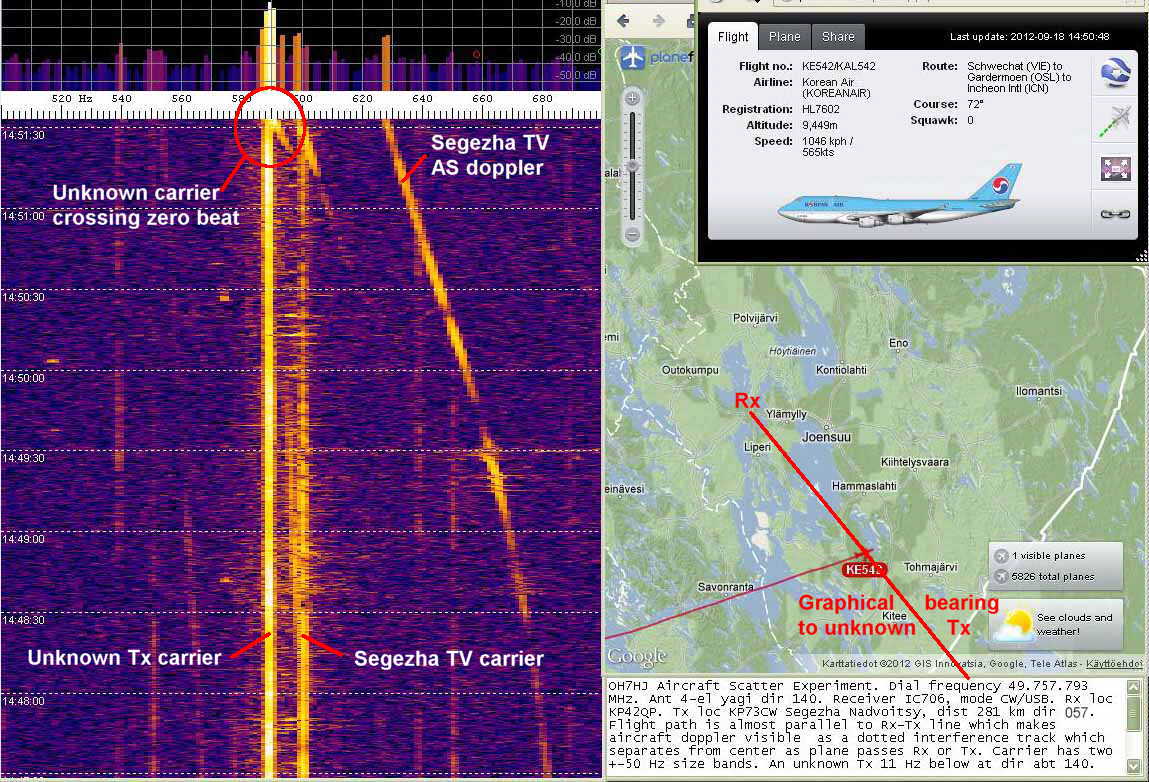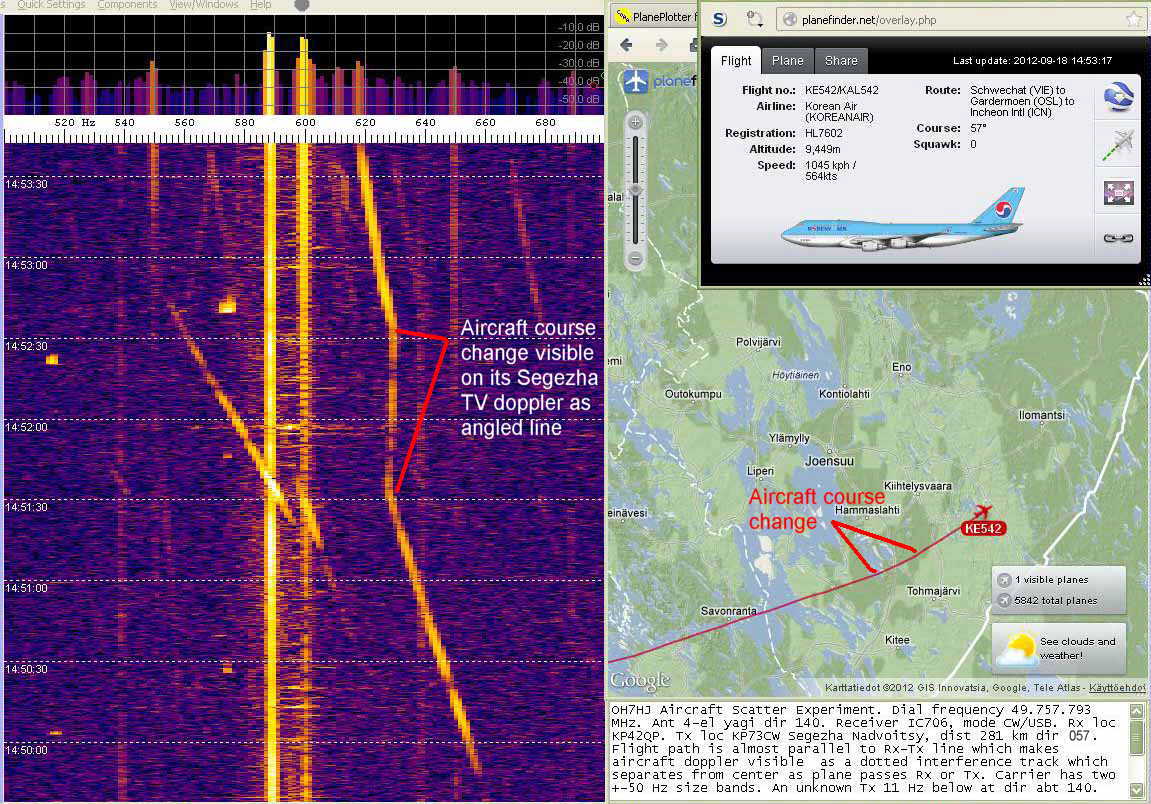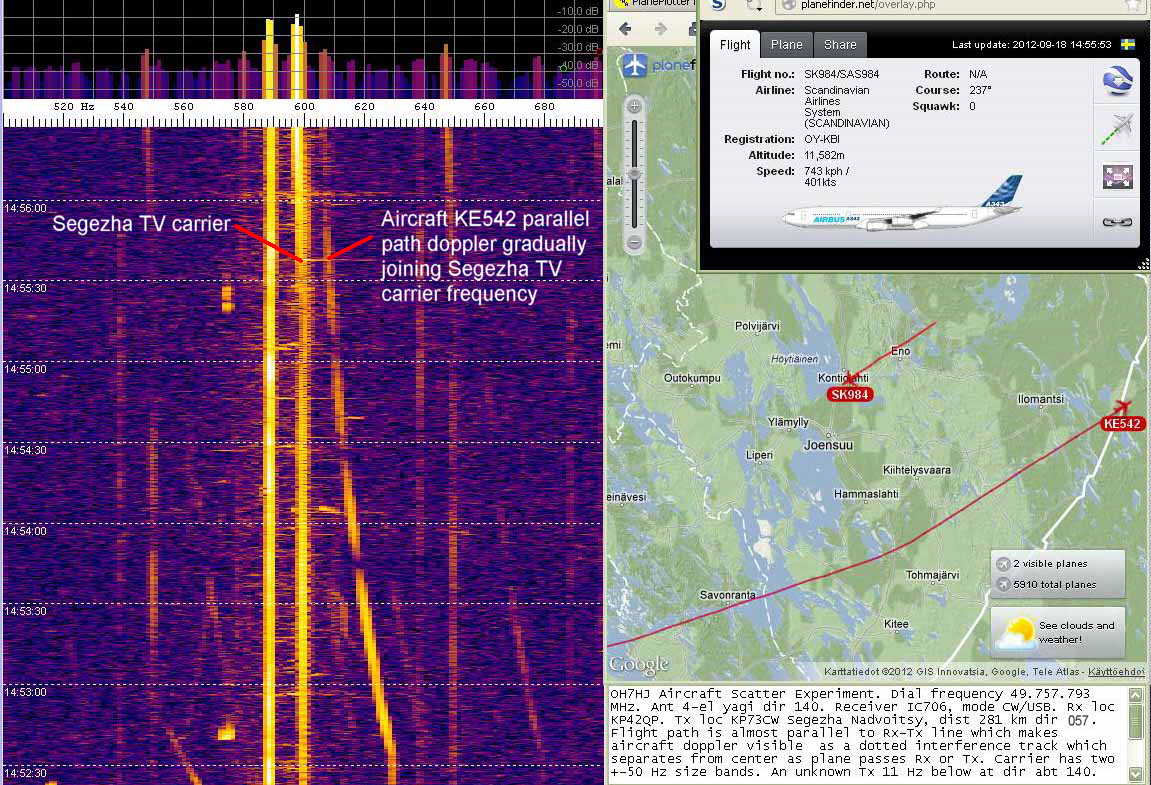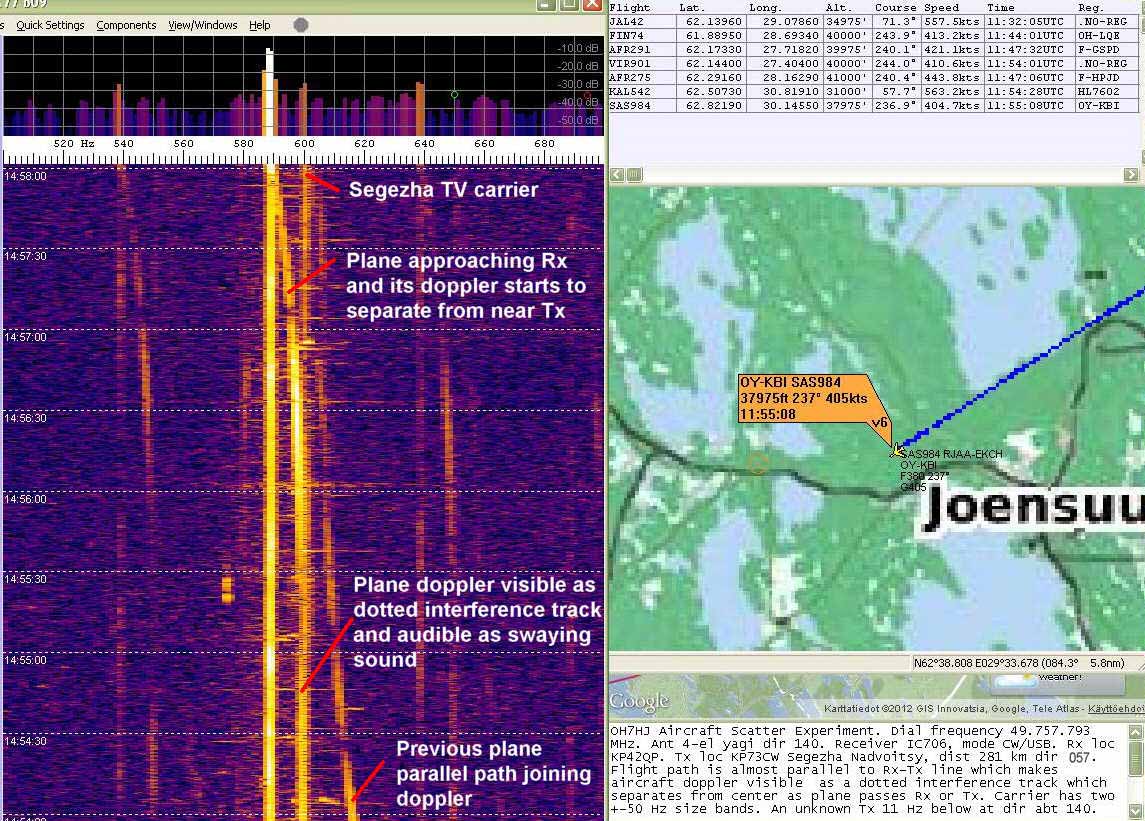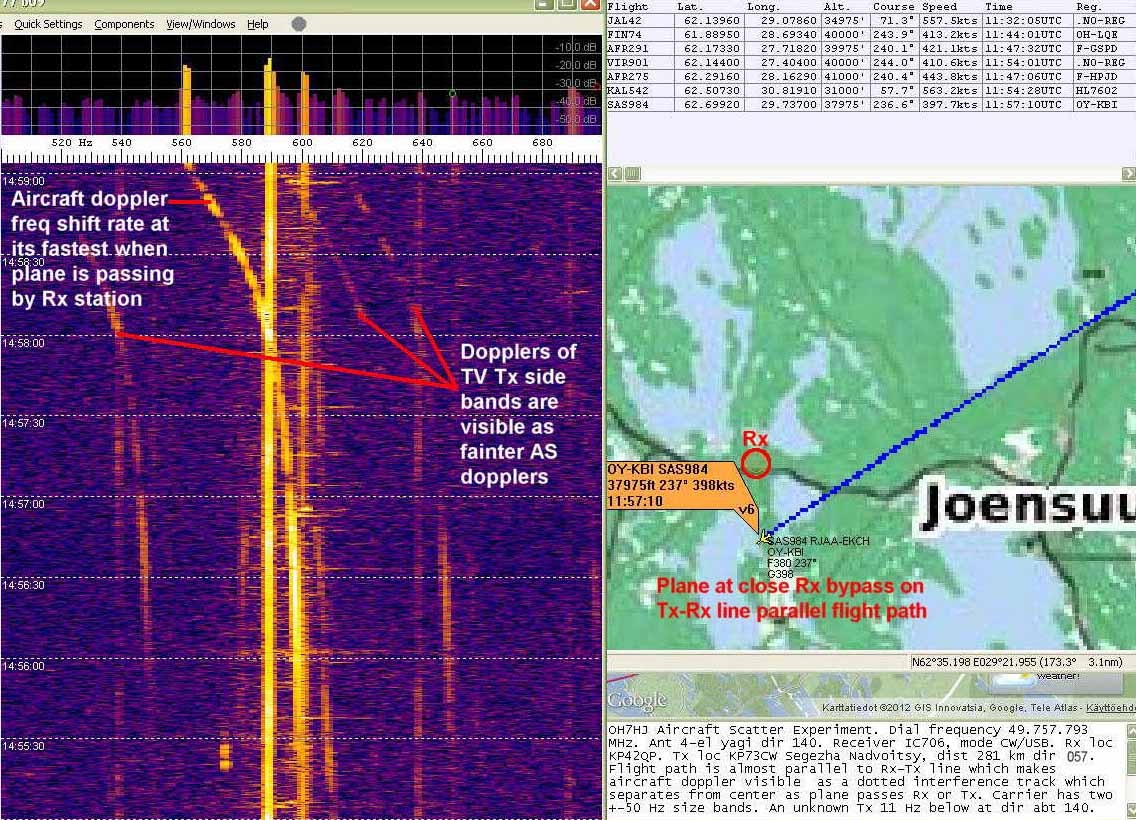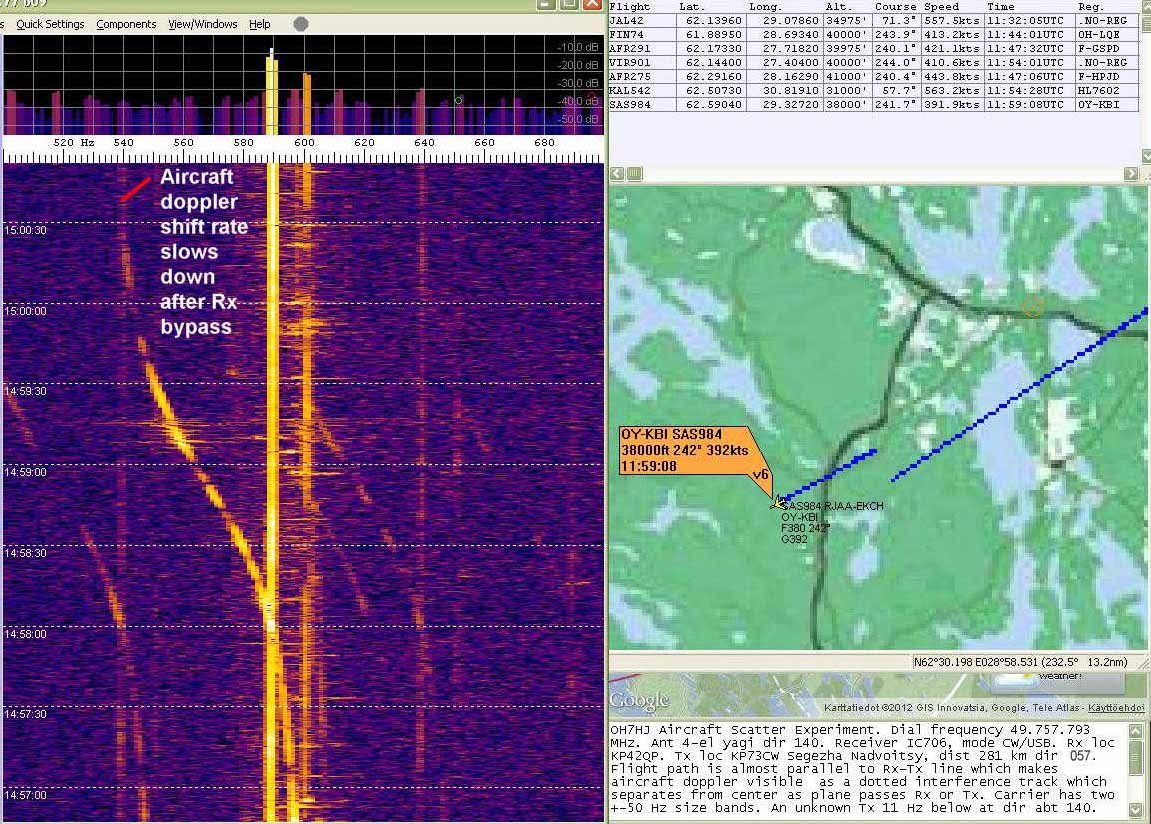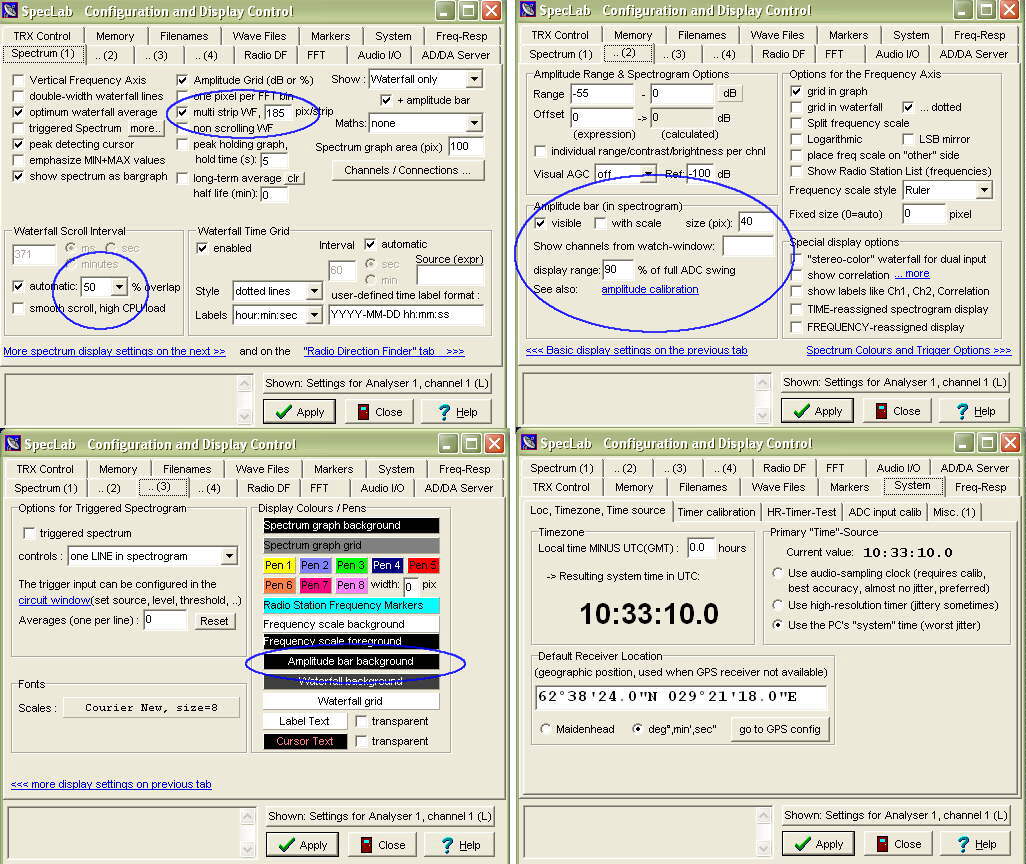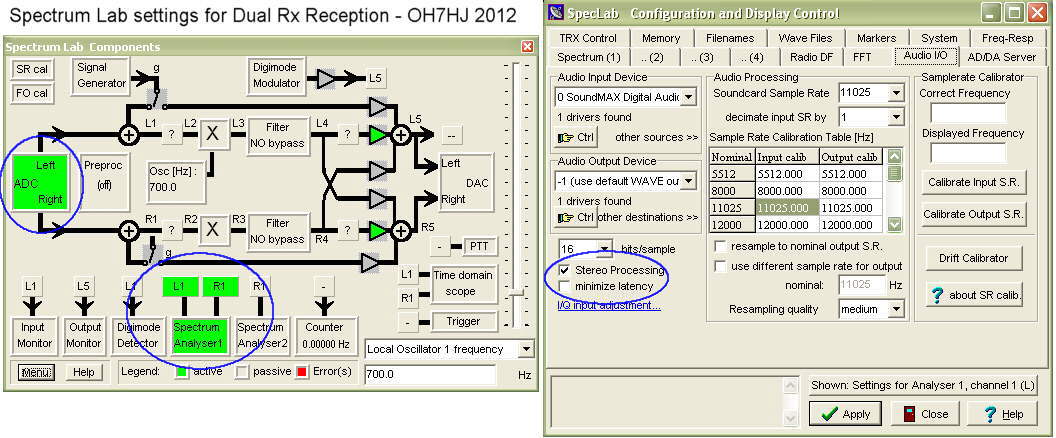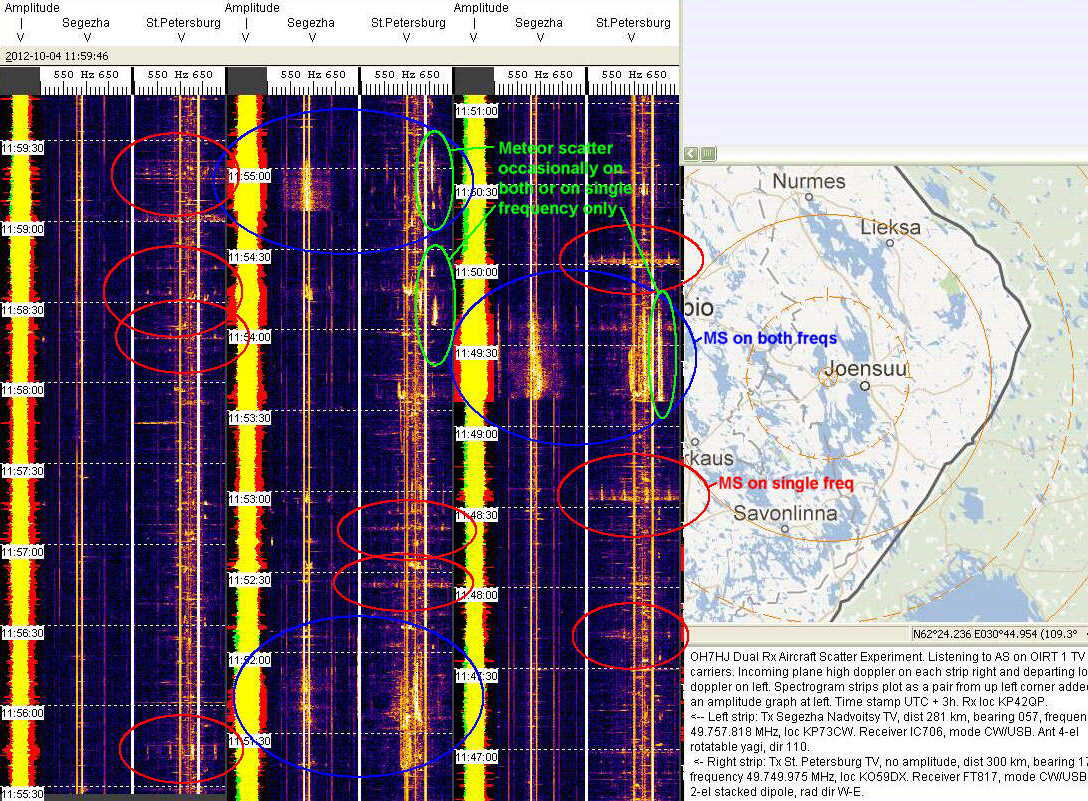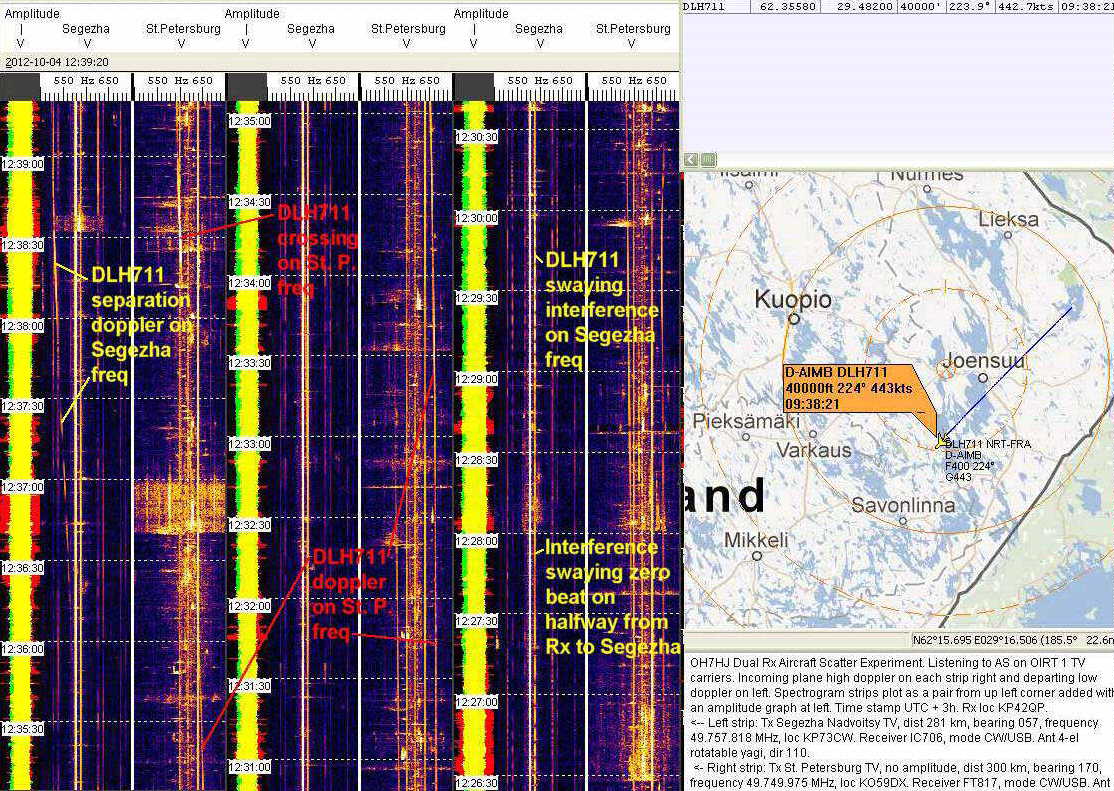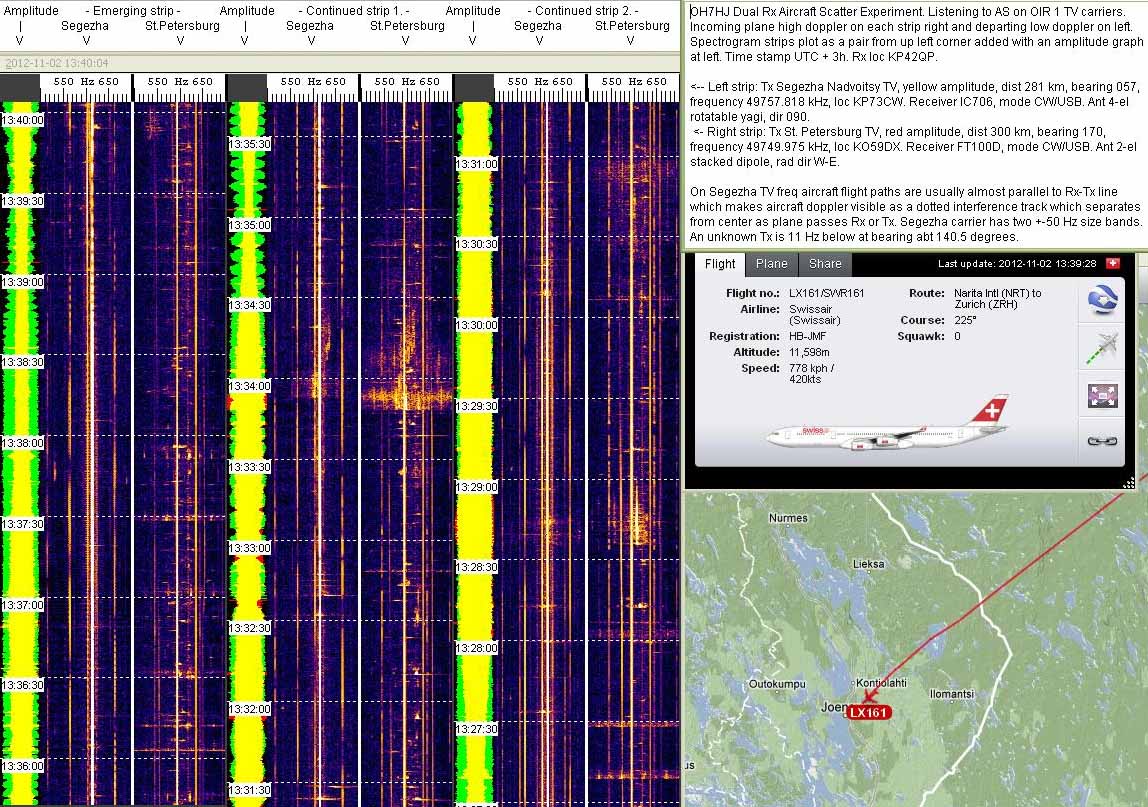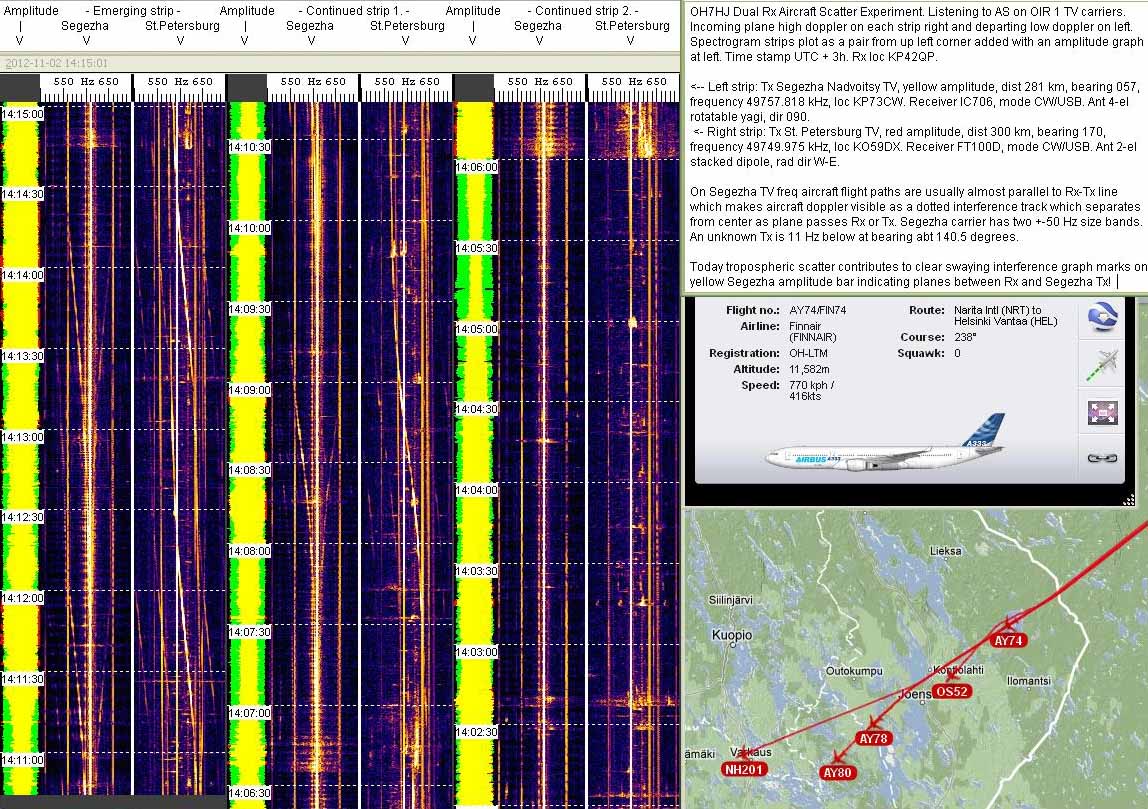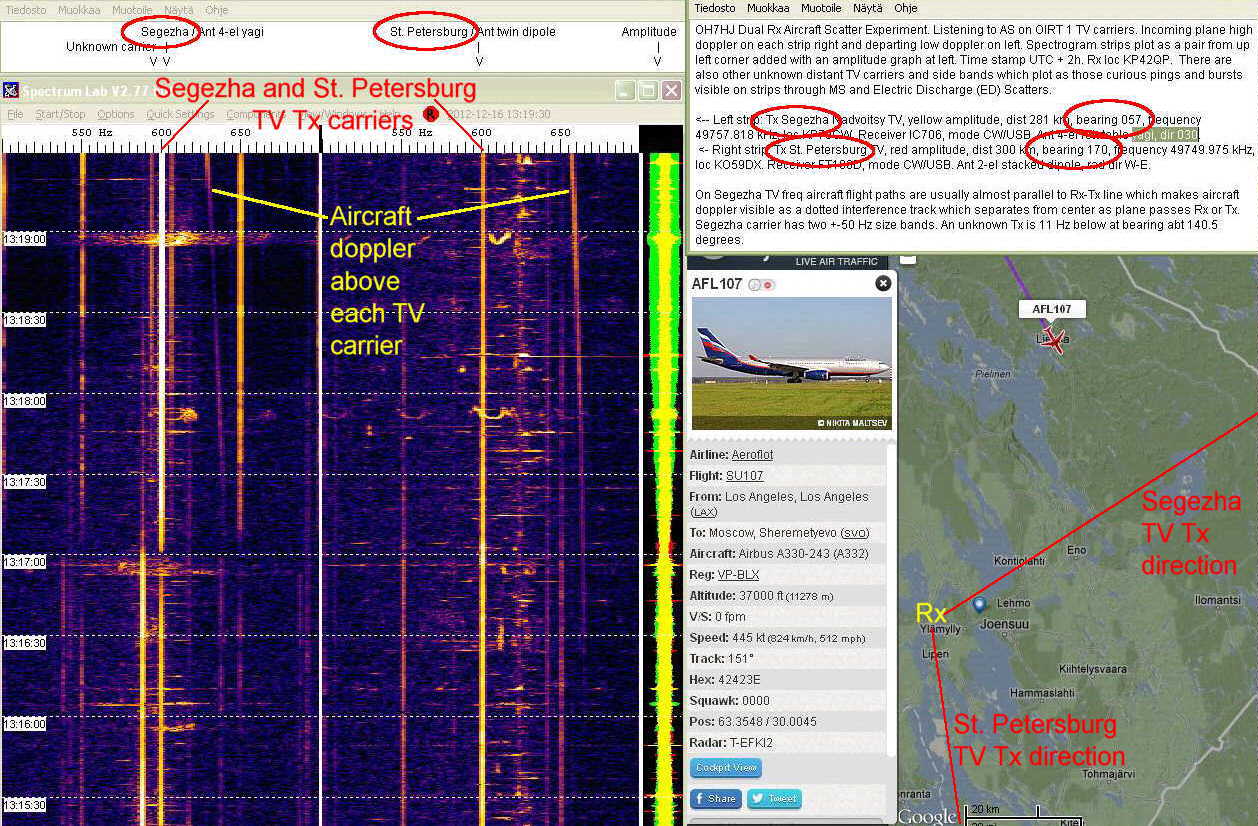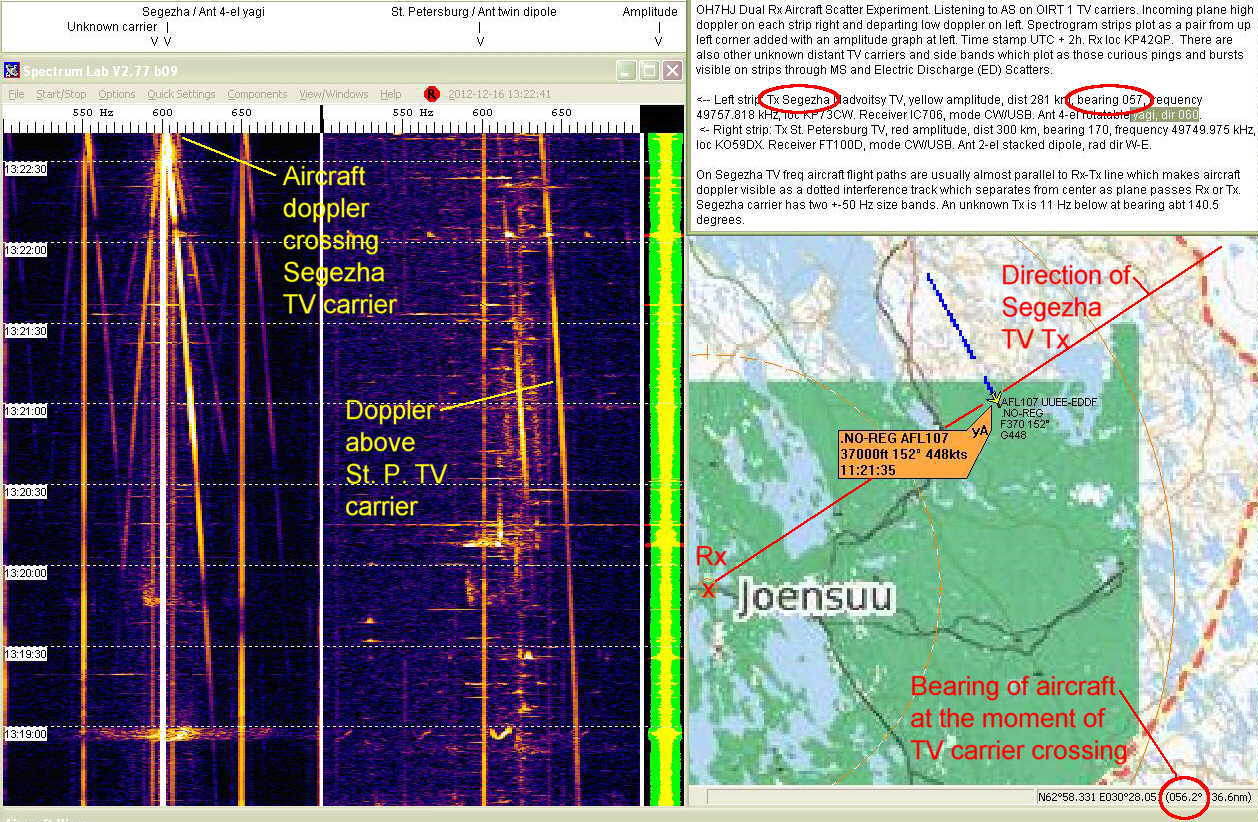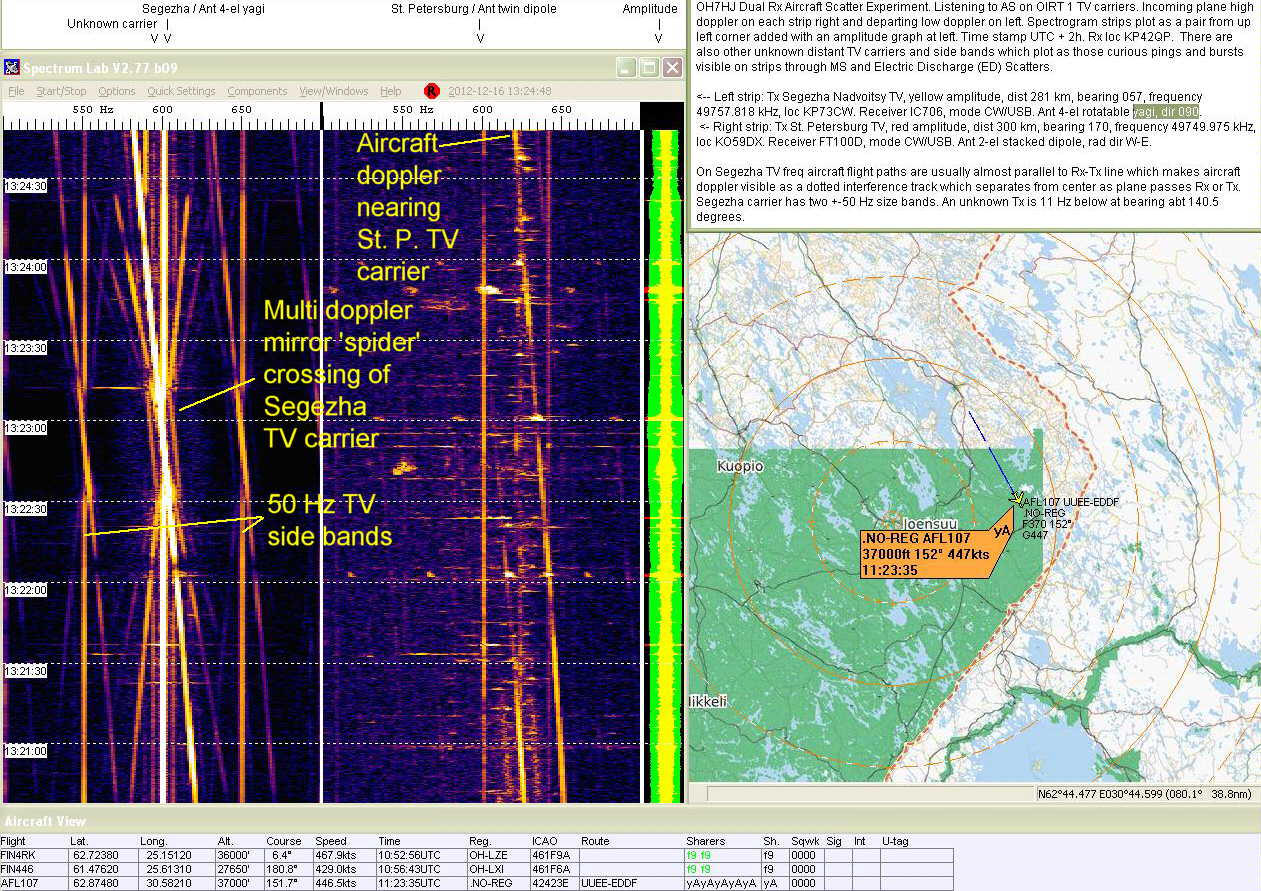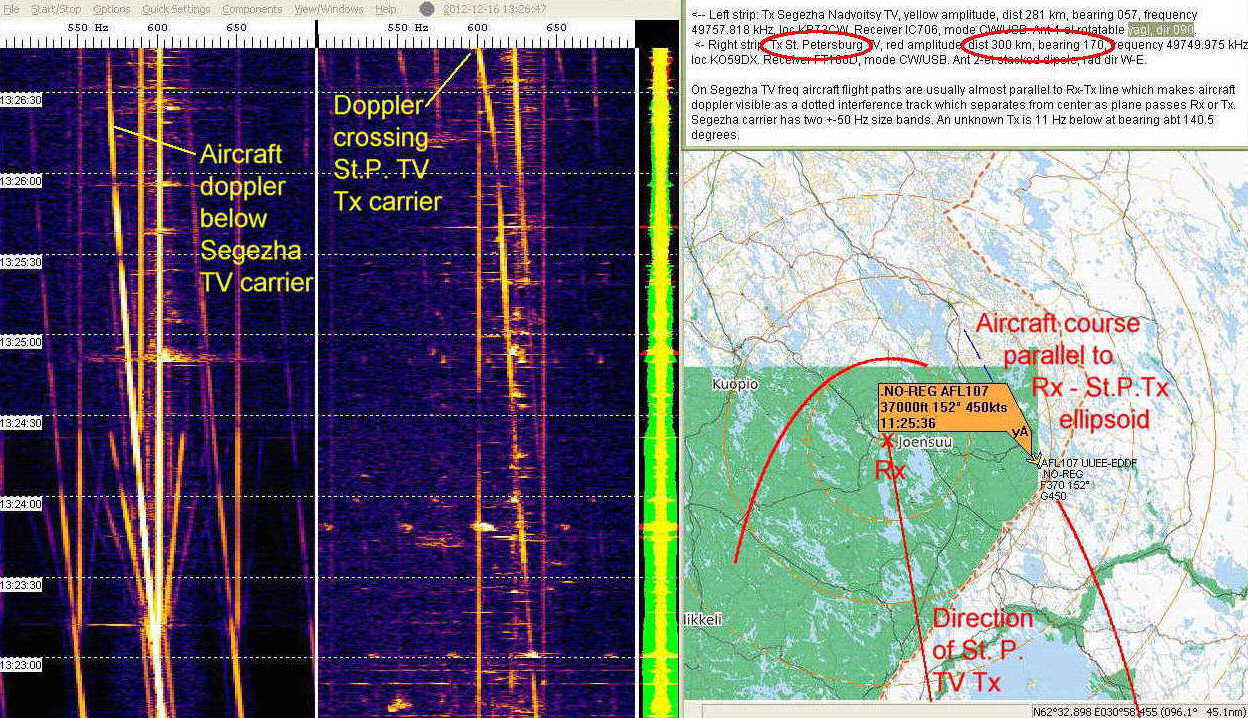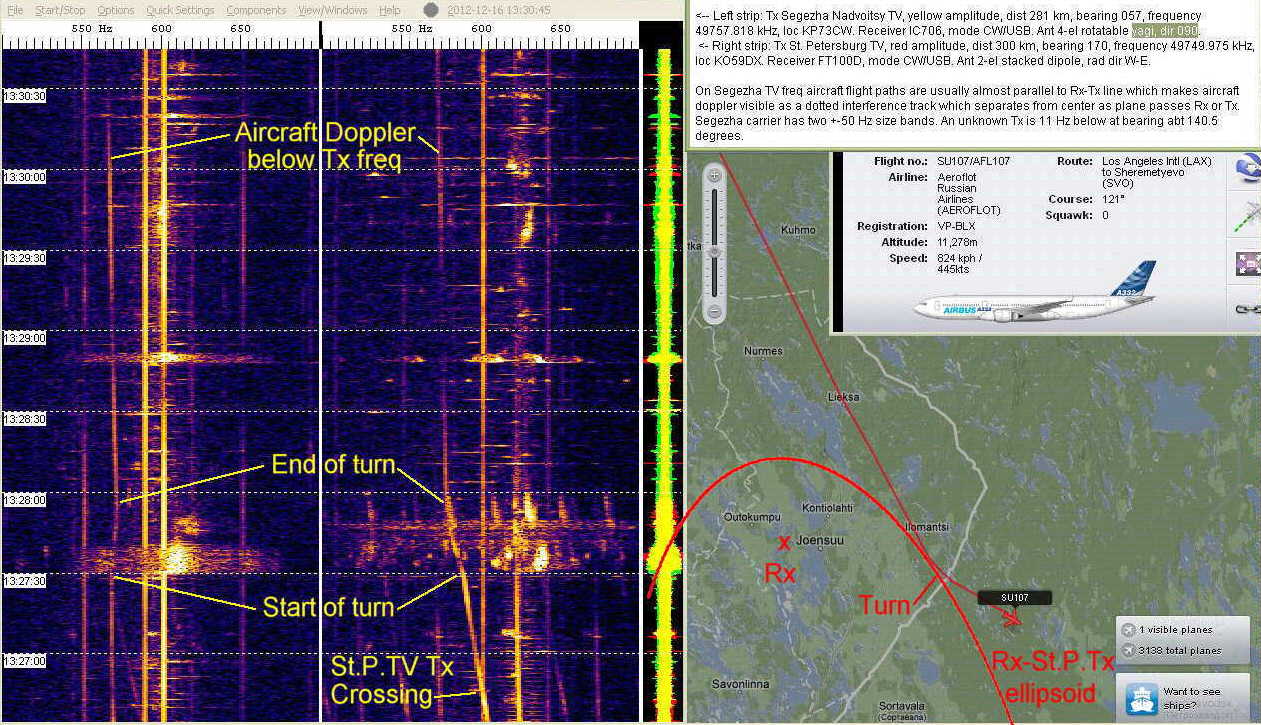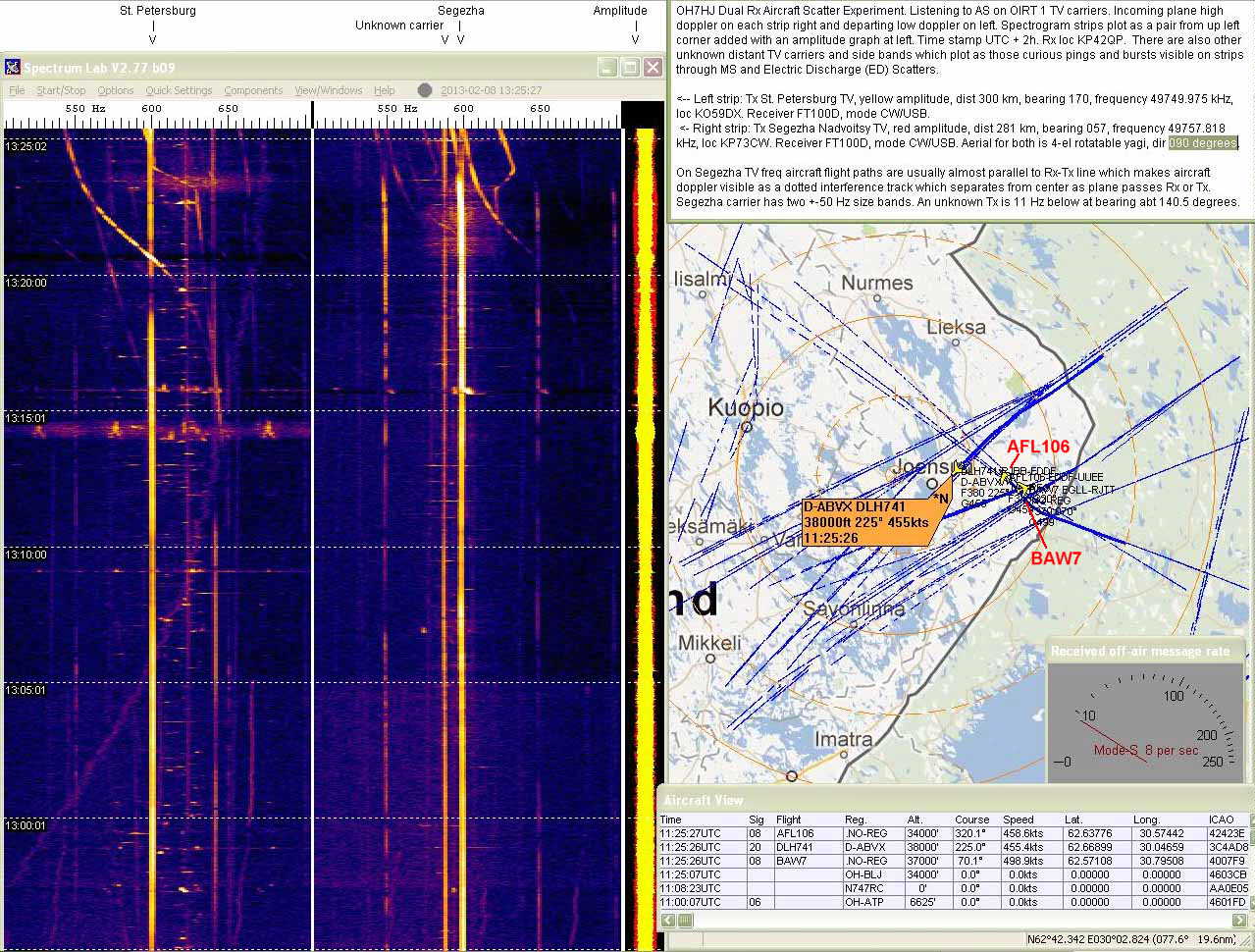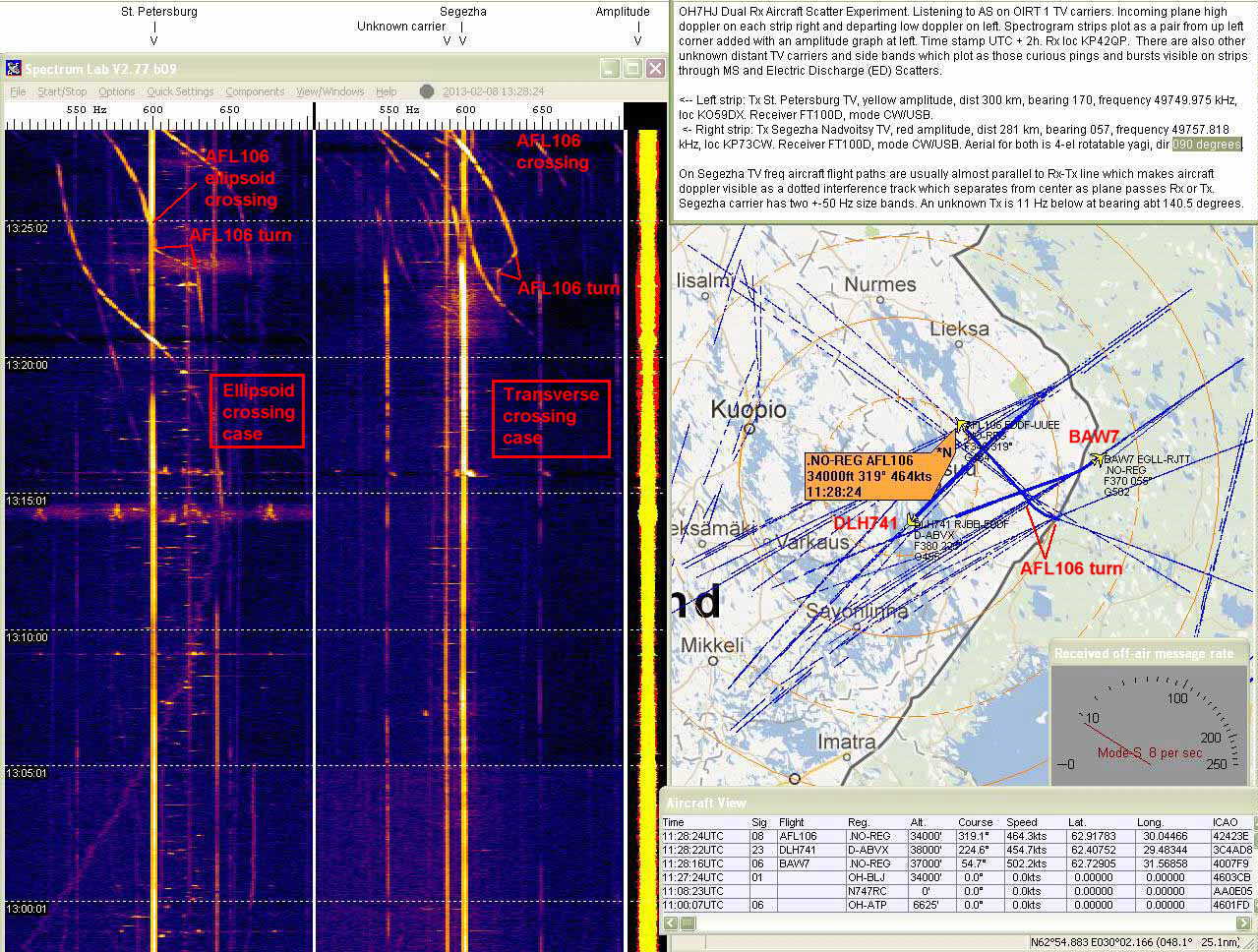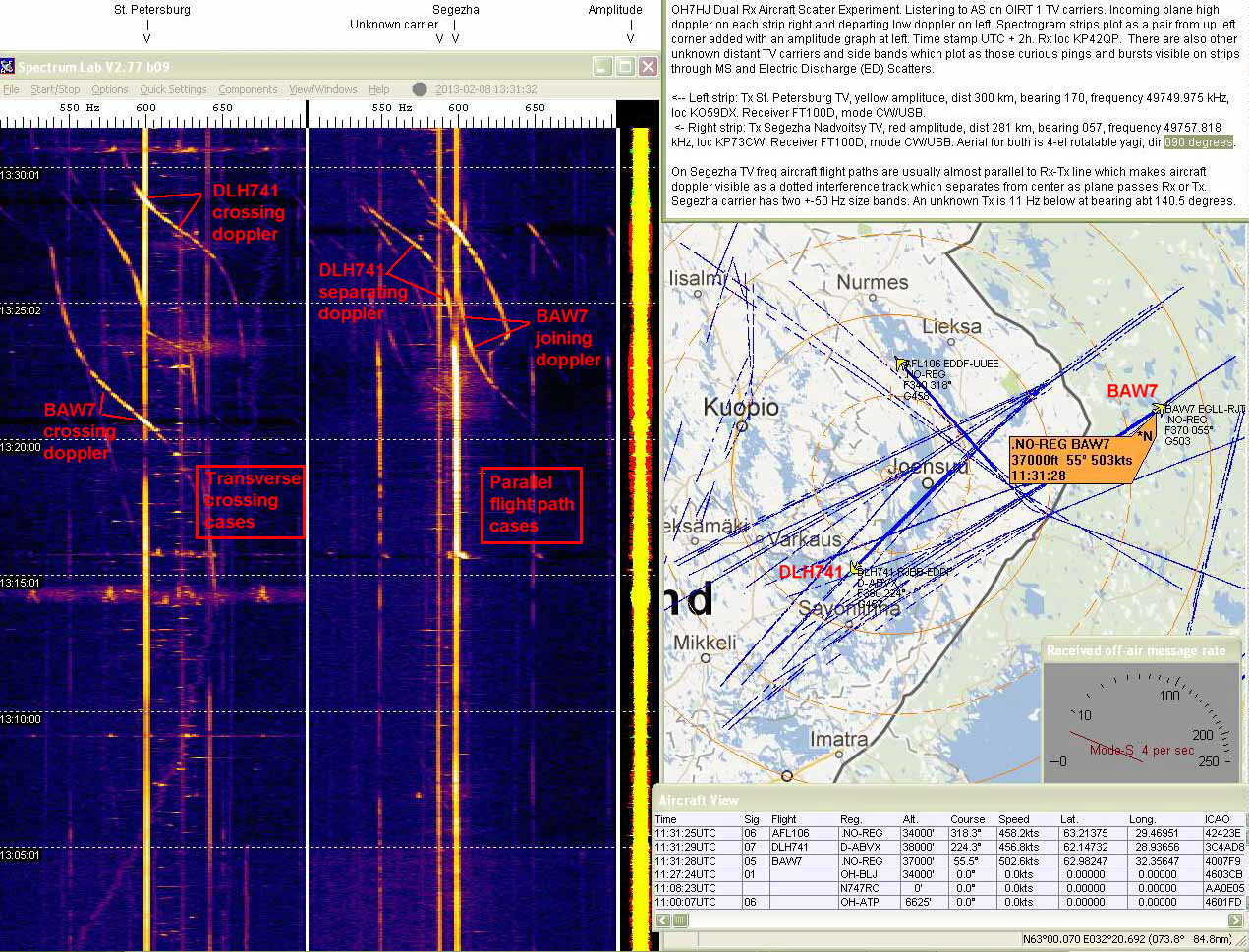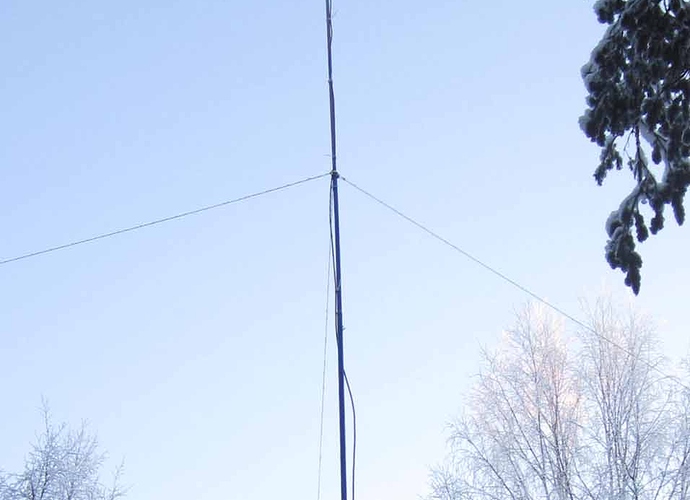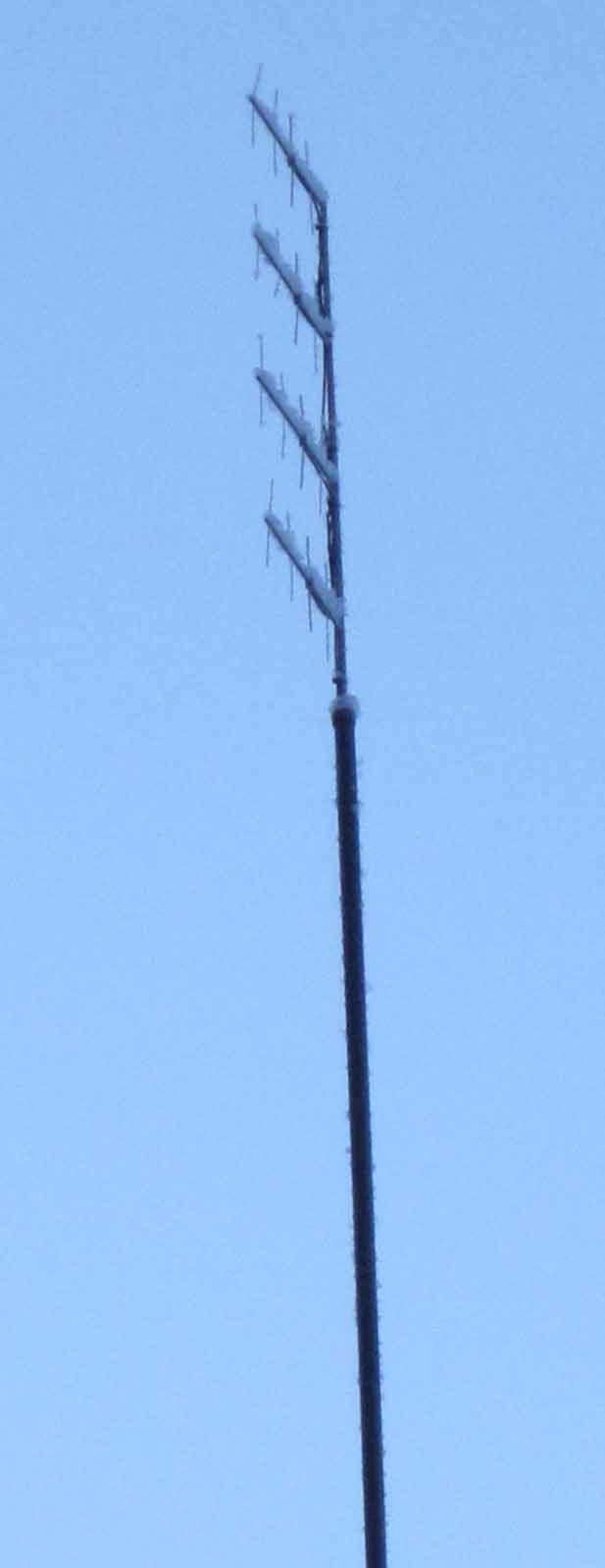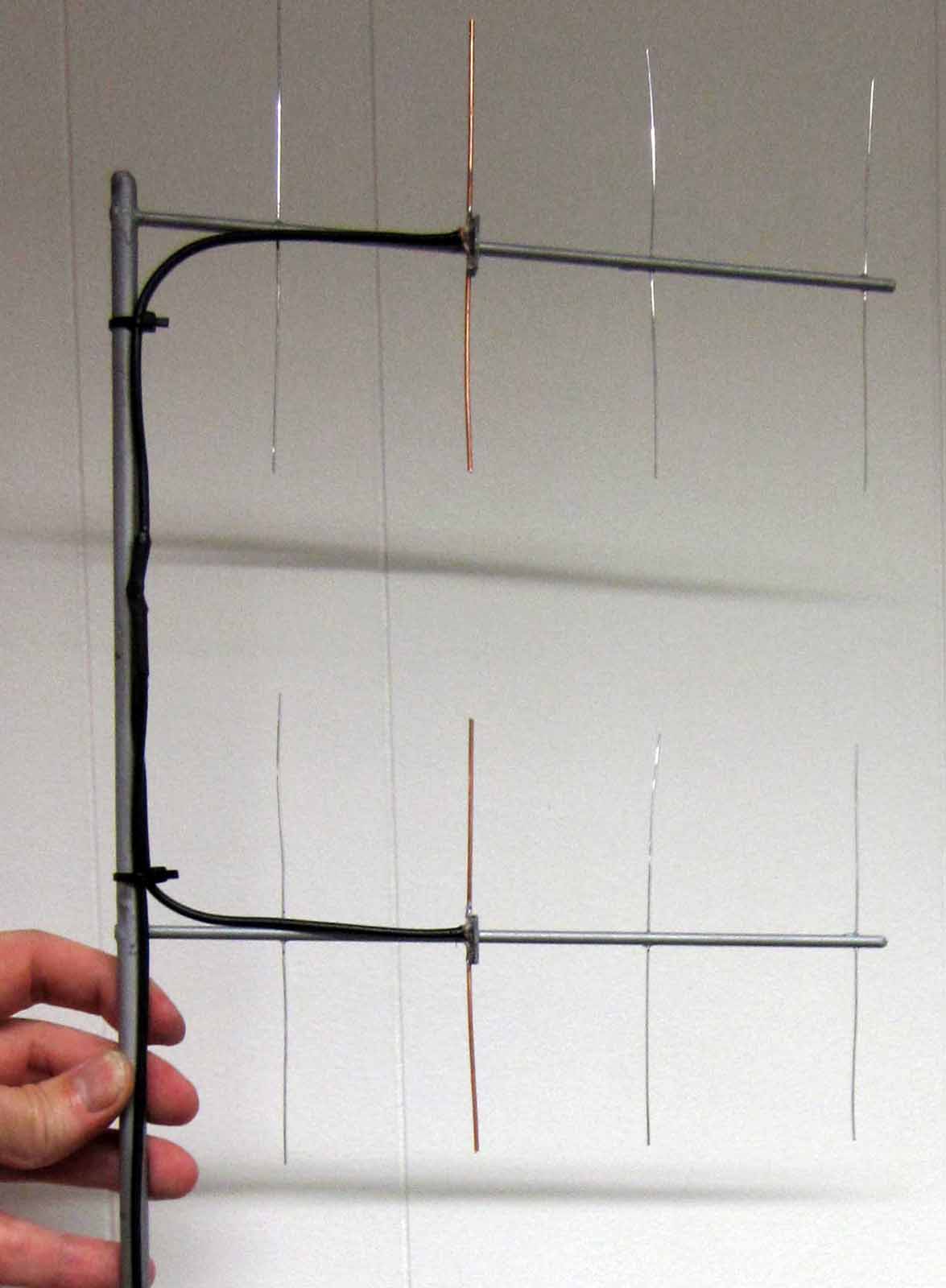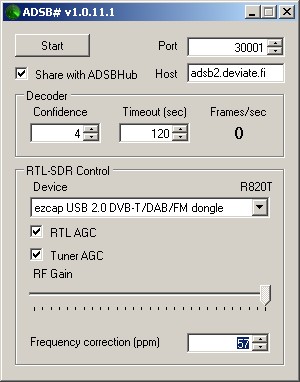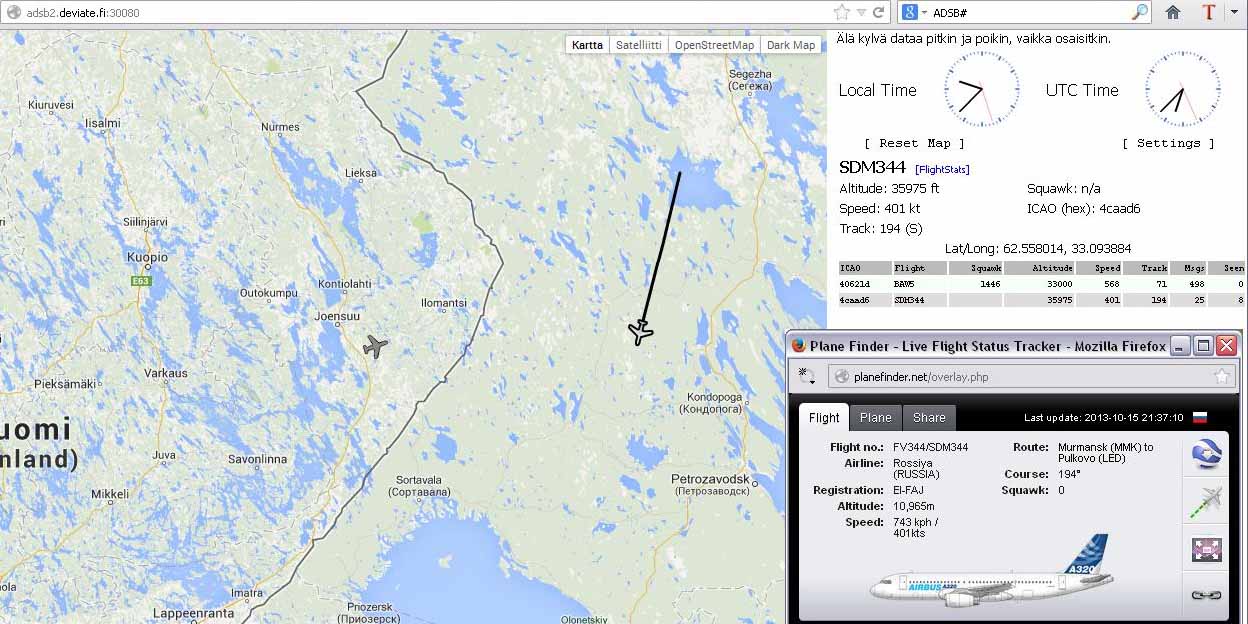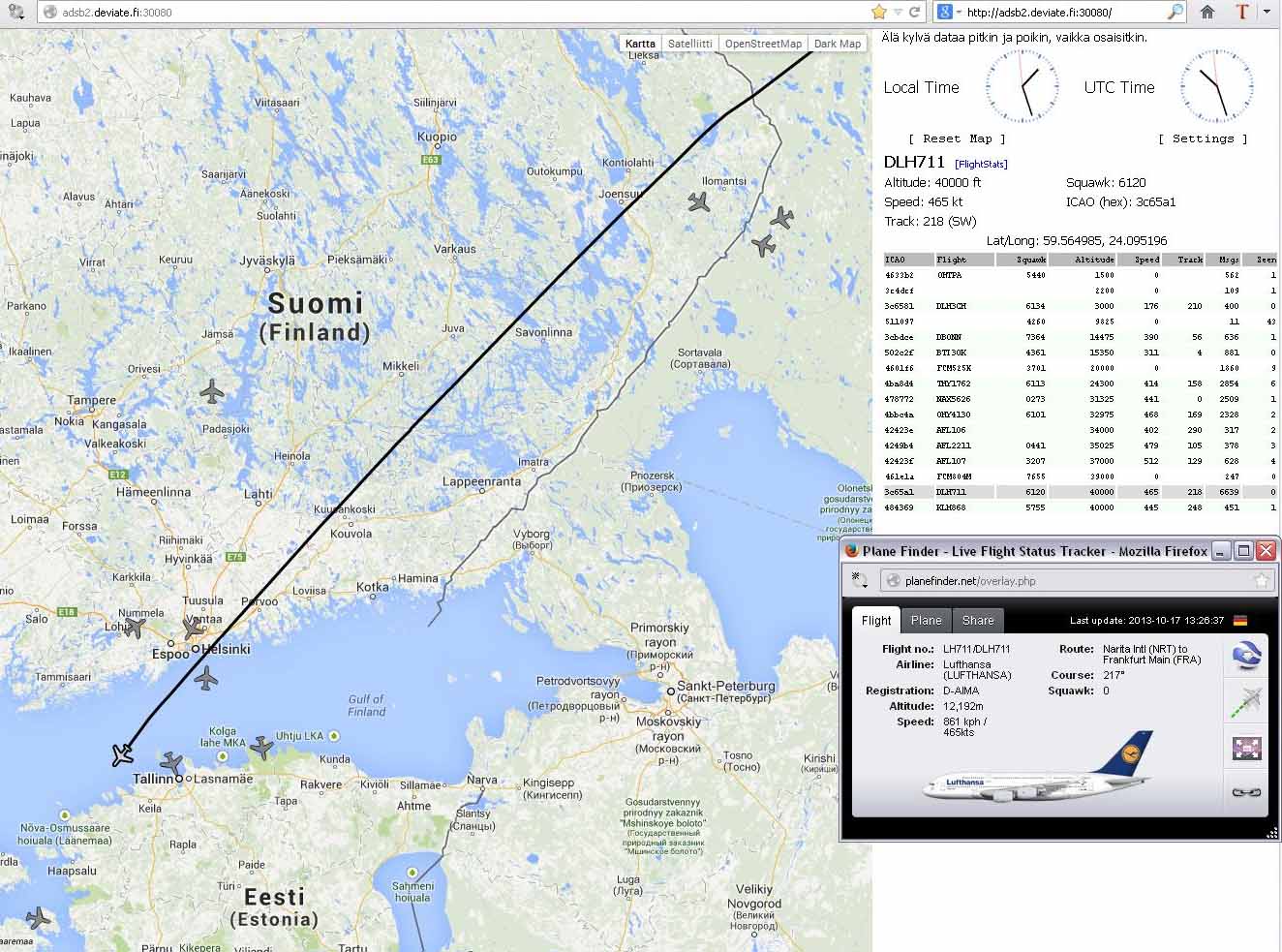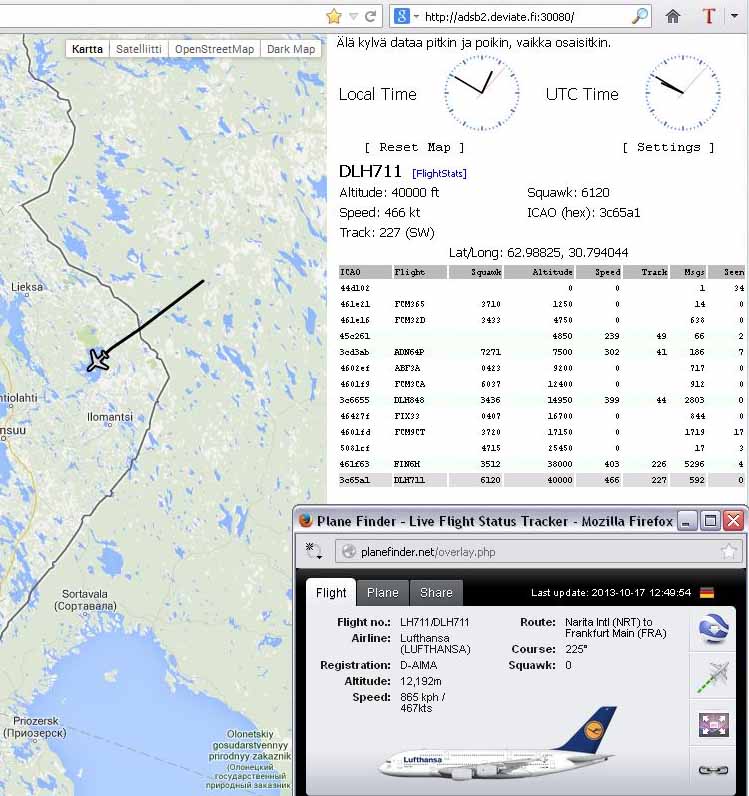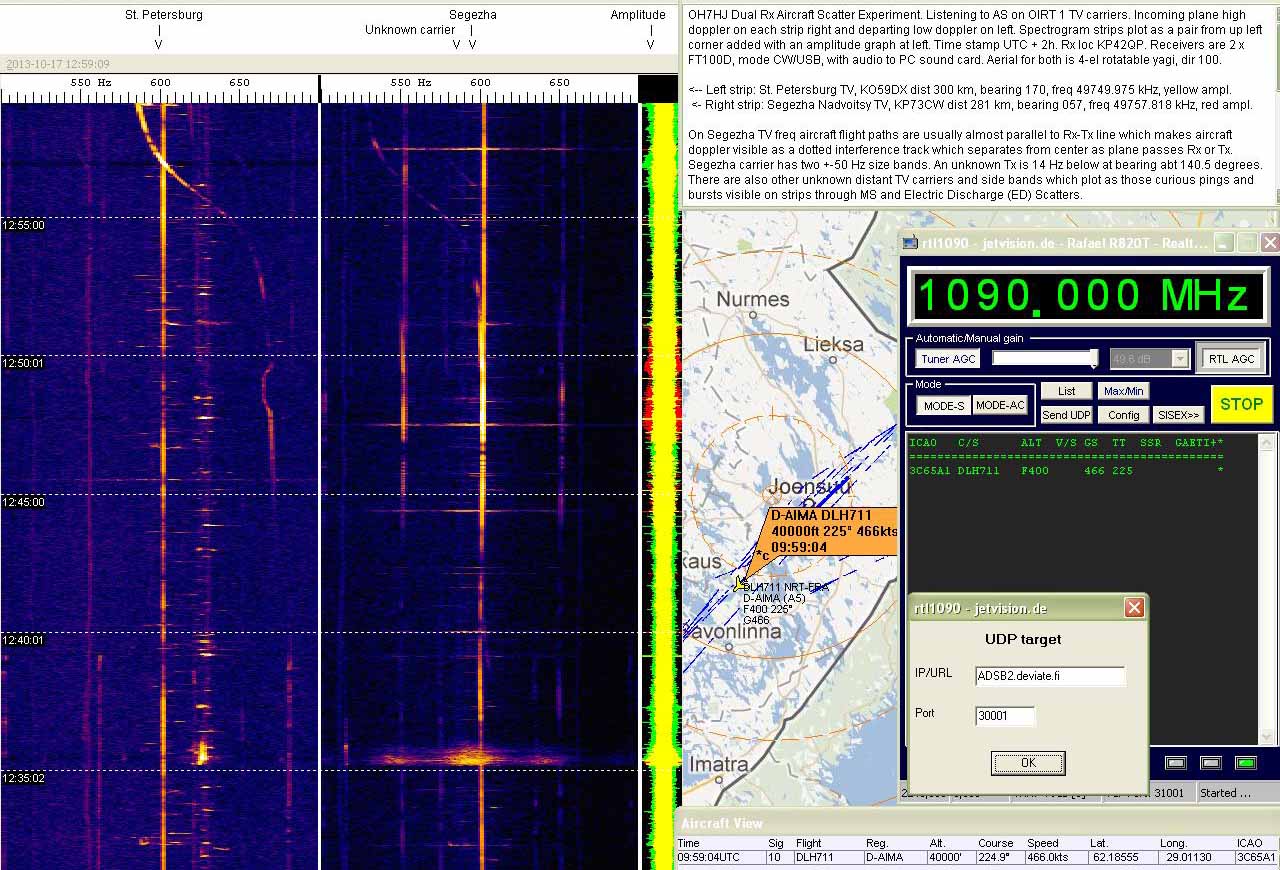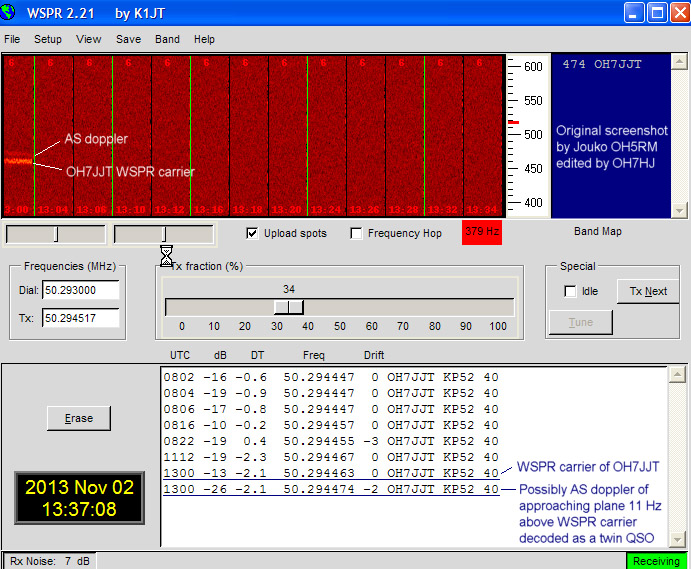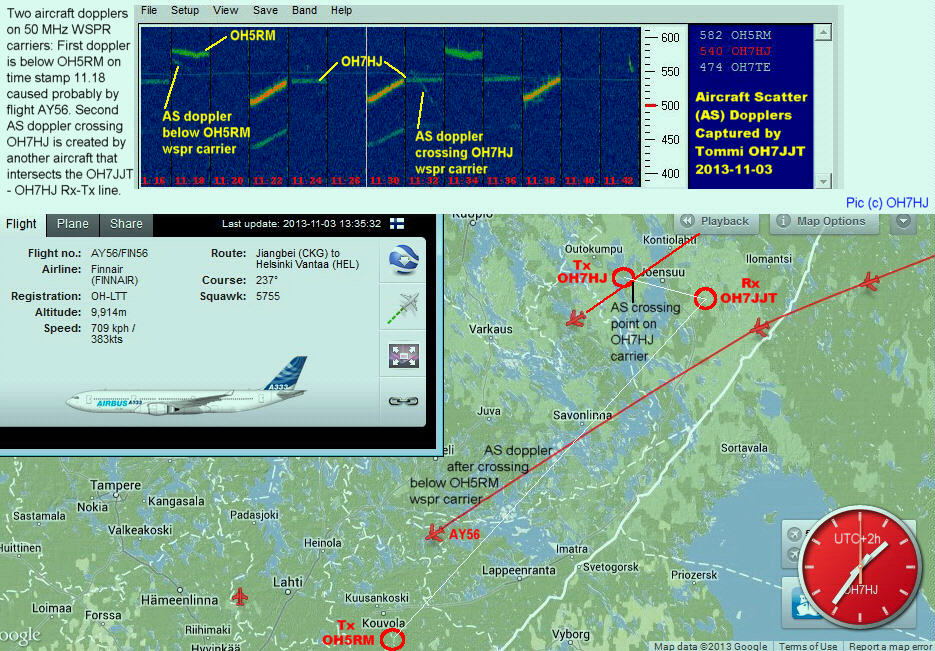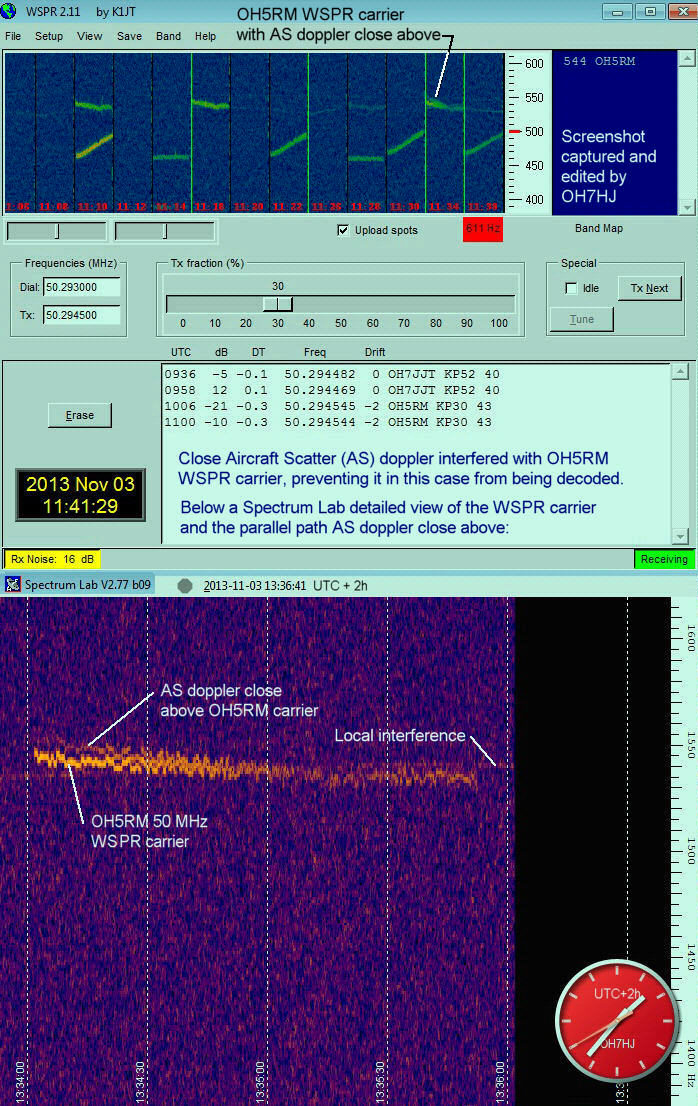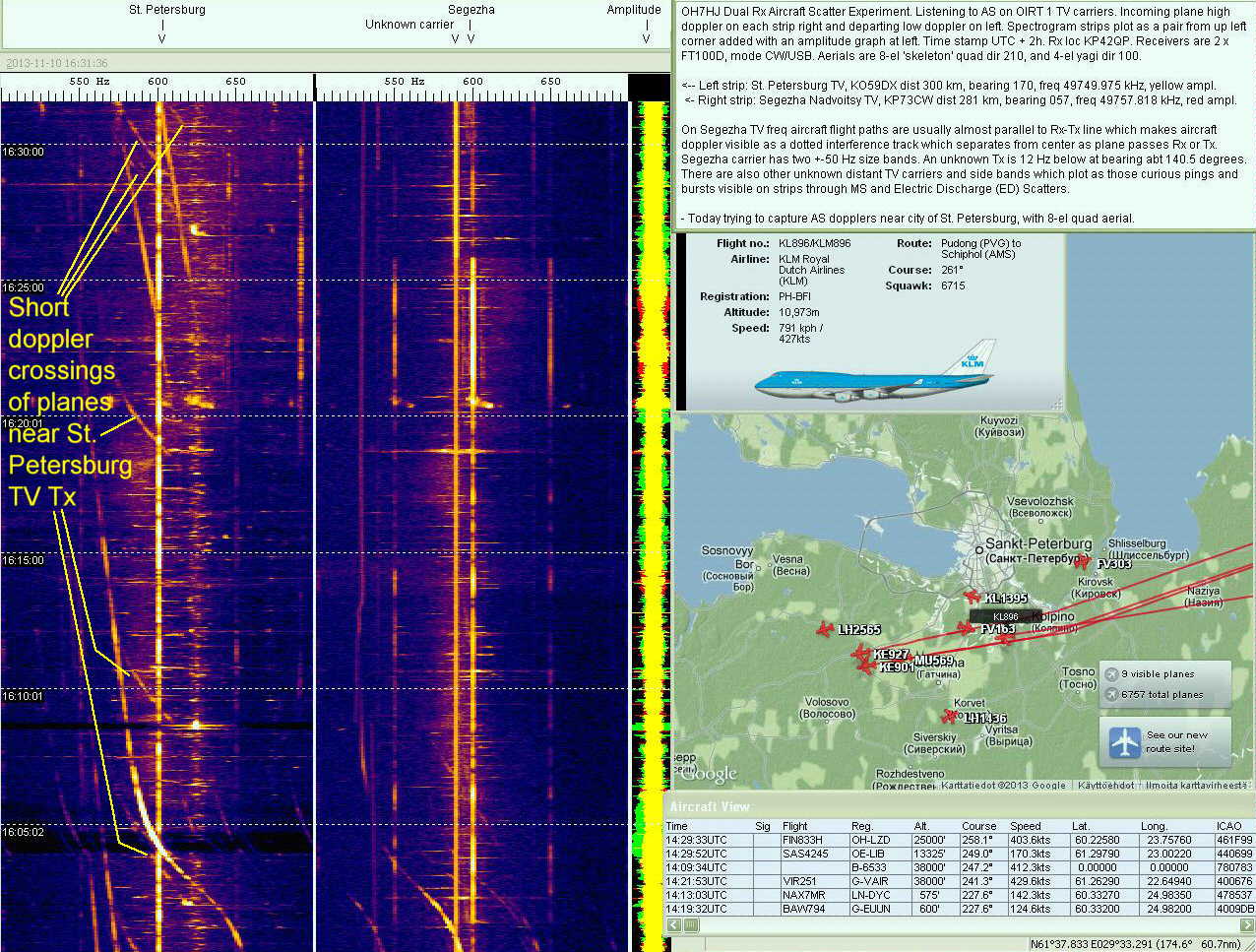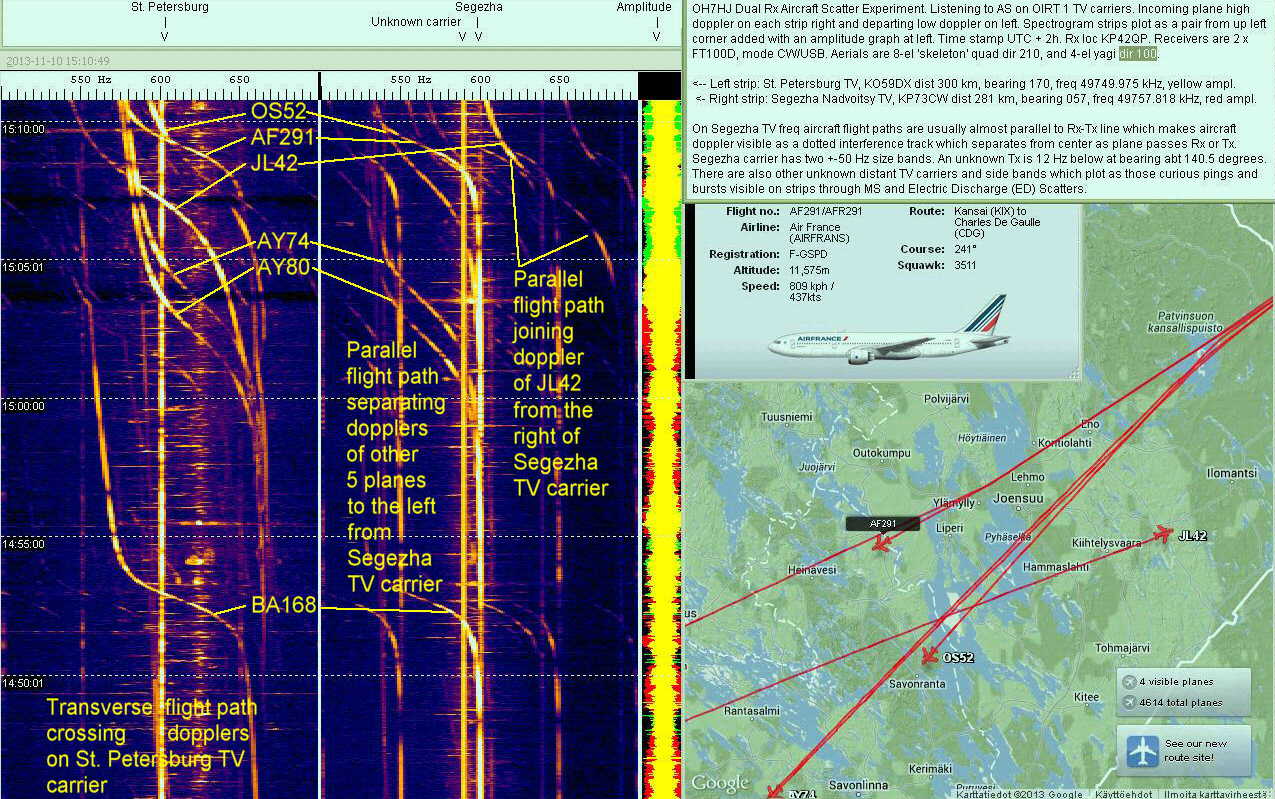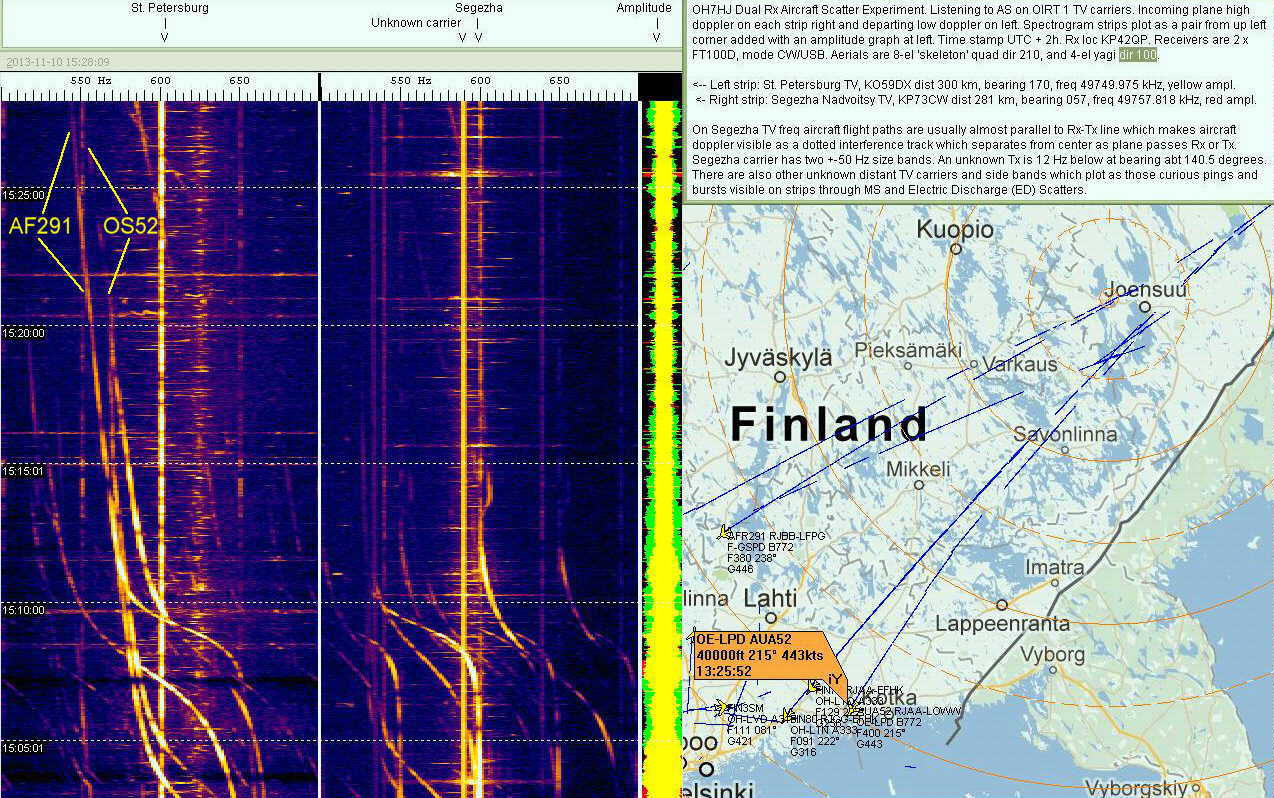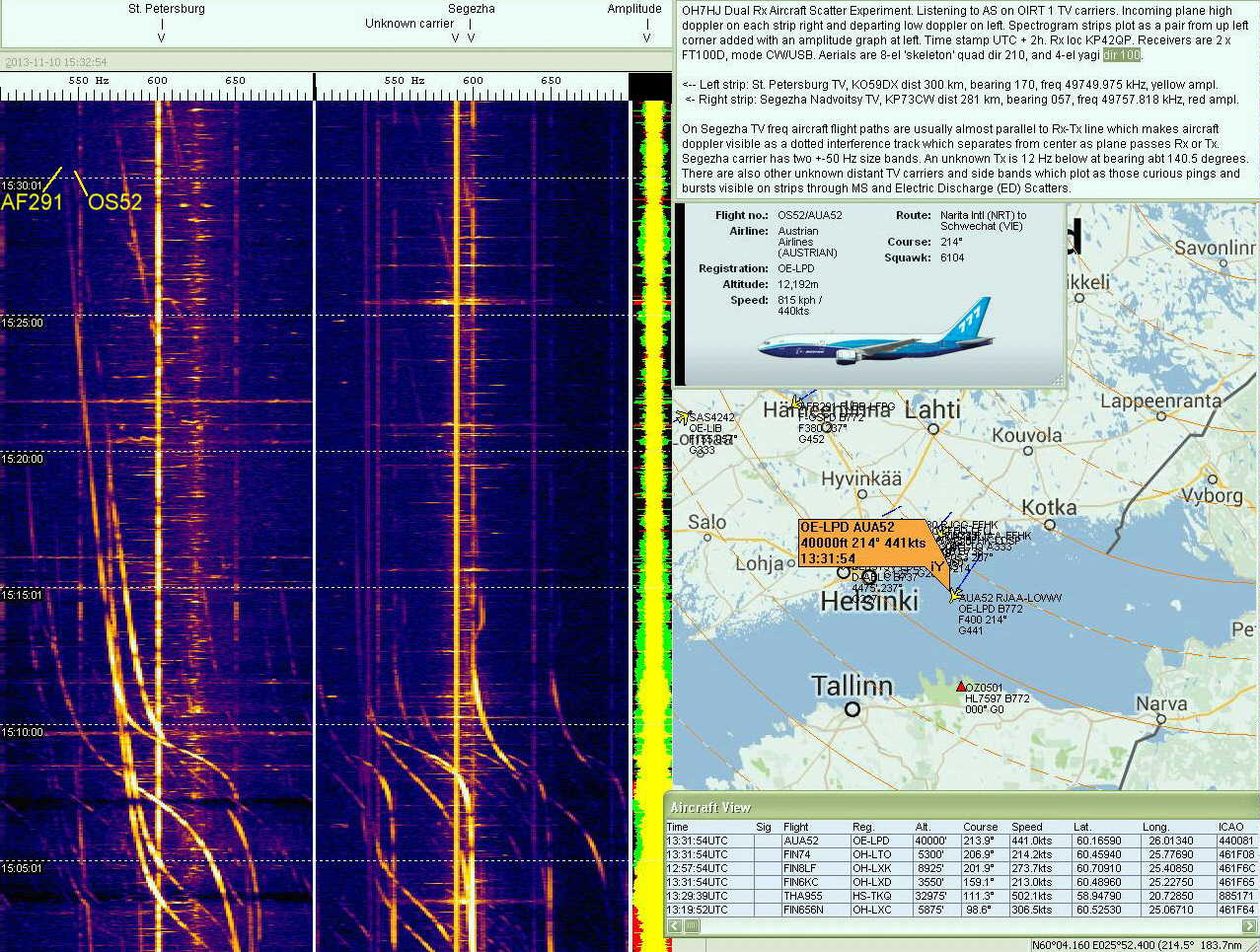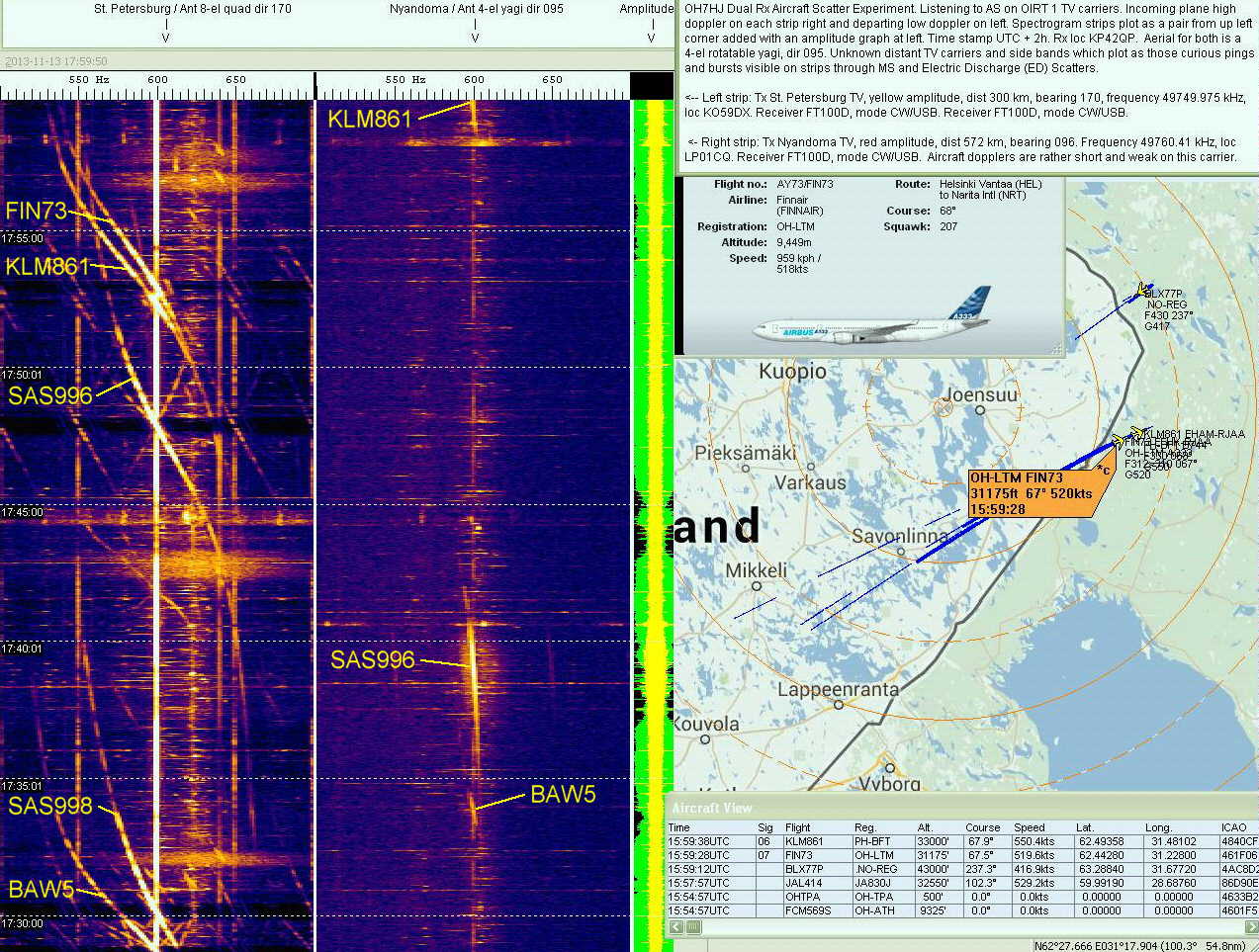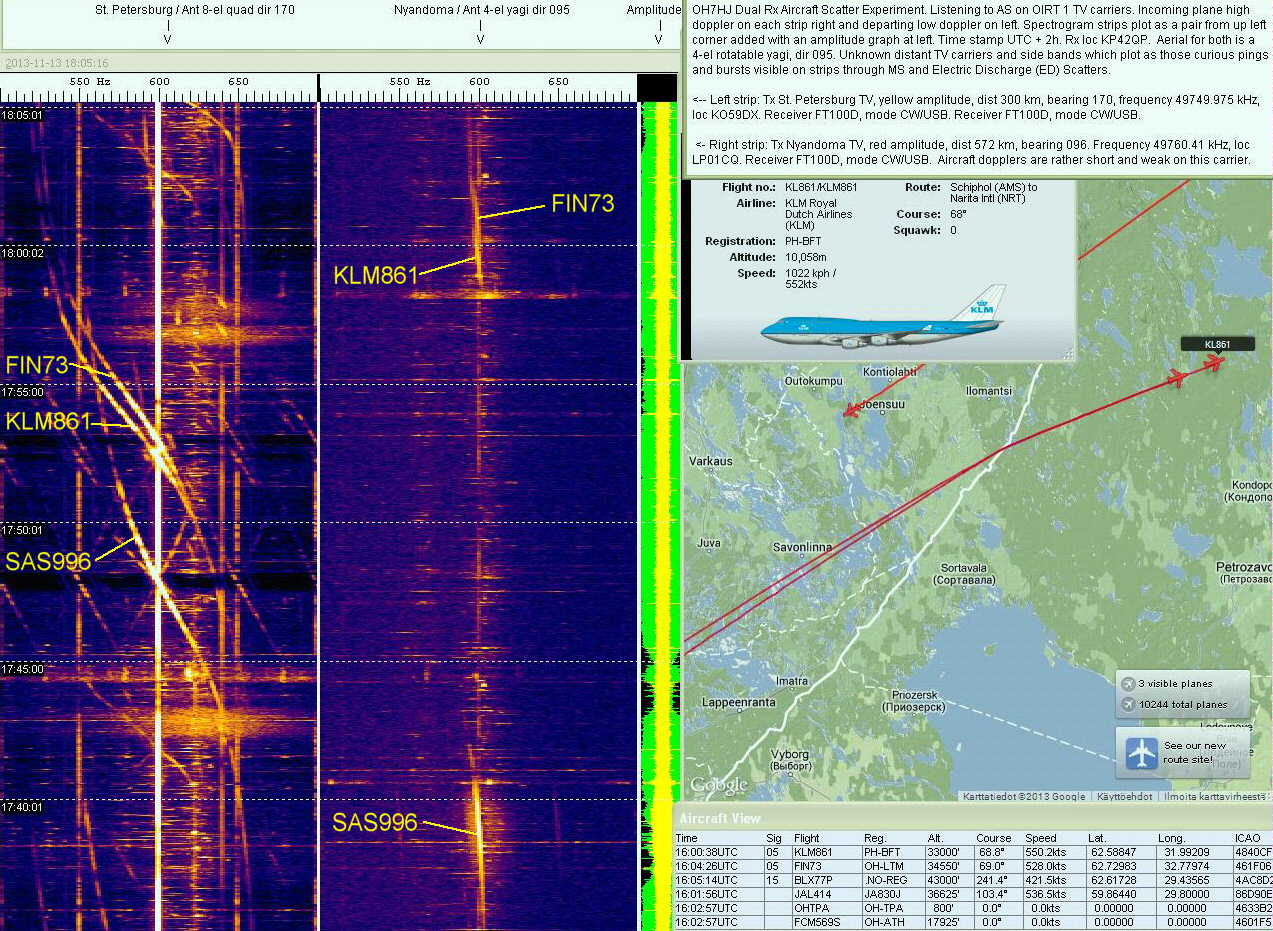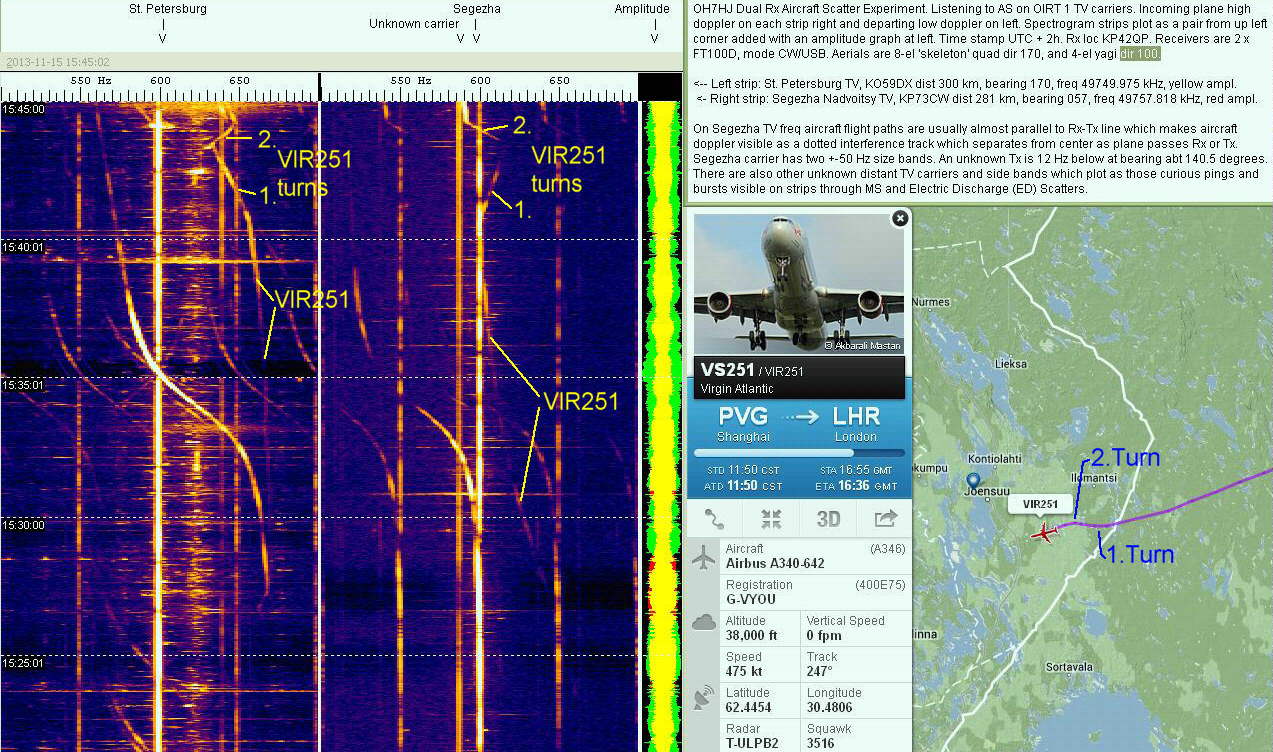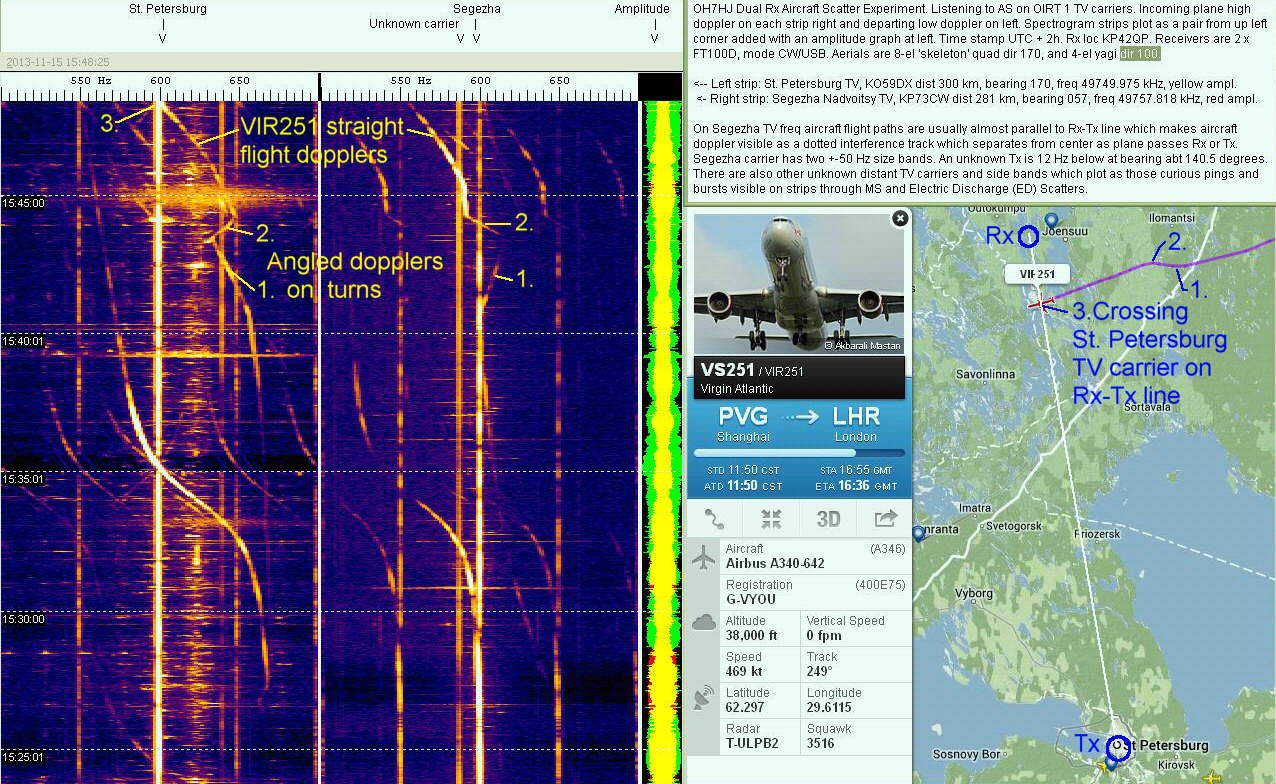Comparing AS on a relatively strong carrier of St Petersburg TV just 300 km away to same aircraft scatters on frequency of Nyandoma TV 576 km away from my Rx, which is almost twice farther. While St Petersburg TV carrier is audible almost constantly, the Nyandoma TV is too far to be seen on the receiver Spectrum Lab strip except for brief MS or EDS bursts.
Below are screenshots of aircraft dopplers on carrier of strong TV Tx of St Petersburg less than radio horizon range away, and on a not visible TV Tx carrier of Nyandoma which is farther than the principal radio horizon range of 400 km of high flying aircraft. The pics show that when Rx is within the radio horizon of a strong TV station like the St. Petersburg, the aircraft scatters are also strong and visible for a rather long time - up to the radio horizon, or at best even a little beyond.
The Nyandoma TV Tx is much farther away, so an aircraft needs to get near enough Nyandoma TV radio horizon about 100 km east of my Rx until it shows up on the Rx spectrum strip. Even then, they are a bit farther than the theoretical radio horizon of about 400 km for high flying planes, but the 50 MHz characteristical ability to bend a little beyond horizon brings their dopplers briefly but clearly visible on my screen.
50 MHz Band - Compromise of Noise and Range
Background radio noise limits readability of weakest signals. Fortunately, the background noise distribution on wide radio frequency spectrum appears to resemble the Boltzman curve, which means that on 50 MHz VHF we have a remarkably lower background noise level compared to HF bands, or to the still higher noise of MF and LF bands.
The 6 m wave is long enough to bend behind hills and other terrain obstacles, which helps to stretch 50 MHz AS reception range in good conditions even a little farther than up to theoretical radio horizon. Together with 50 MHz relatively long range with local QSO’s, the fairly low background noise of this 6 m VHF band allows good uninterrupted AS reception range. However, in urban areas, this low VHF band usually suffers from interference caused by local digital electronic noise. Getting aerials away from buildings usually helps.
The 50 MHz wave ability to bend also makes this band less demanding about Rx aerial height. Low band VHF aircraft scatters are supposed to propagate best as horizontally polarized, which is also the preferred polarization of 50 MHz aerials for low loss QSO’s in our forest environment, as trees are more greedy to absorb vertically polarized low VHF waves than horizontally polarized waves. All the 50 MHz AS examples I have recorded are received with 6 m band aerials lower than 10 m above ground, surrounded by higher trees.
AS on Low and High Bands
Aircraft scatter dopplers are visible also on HF bands, but their range is usually rather limited because these low power aircraft scatters are covered by stronger background noise characteristical to lower radio frequencies.
How about higher than 50 MHz bands? With higher frequency, both background noise and harmful urban interference from electronic devices decrease further, allowing to spot still weaker AS signals. Lower background noise and less electronic interference makes high VHF and low UHF bands good for AS reception experiments especially near cities and other populous areas.
If moving still higher to GHz frequencies of high UHF and SHF bands, the background noise still decreases, but so does the practical reception range. GHz bands are suitable for AS reception, provided that reception aerial are high enough above surrounding obstacles to provide clear line-of-sight view through the Fresnel zone, which dramatically limits the reception range of low aerials on GHz bands.
AS Reception Range
Aircraft scatter reception range is determined by the theoretical Cassini oval shaped boundaries, aircraft altitude, aircraft reflection area and its directional pattern related to reflection angle and geometry of aircraft, Tx ERP power and aerial height, Rx aerial gain and height, and the common area of combined Rx and Tx radio horizons.
With very powerful ERP transmitters, like the 149 kW ERP St. Petersburg TV Tx, the maximum AS reception range boundaries are stretched wide, and determined practically by the common area of both Rx and Tx radio horizons. In this high Tx power case the theoretical Cassini oval shape resembles large ellipse, with Tx and Rx as its center points. The practical radio horizons of course limits the boundaries of theoretical ‘flat earth’ Cassini oval AS range.
If the Tx has low ERP power, like the 20 W ERP OH5SHF ham radio beacon, the AS reception area shrinks down to a narrow strip on the line between Tx and Rx, plus close areas around Tx and Rx. Now aircraft scatters are received only when the plane is near or crossing Rx-Tx line, or when it is close to Tx or Rx. In this low Tx power case the AS reception area boundaries are determined by the shape of theoretical Cassini oval, when the oval is smaller than common area of Tx and Rx radio horizons.
Links
Aircraft scatter on low power Kouvola 6 m beacon OH5SHF: oh7ab.fi/foorumi/viewtopic.php?f … p=720#p720
